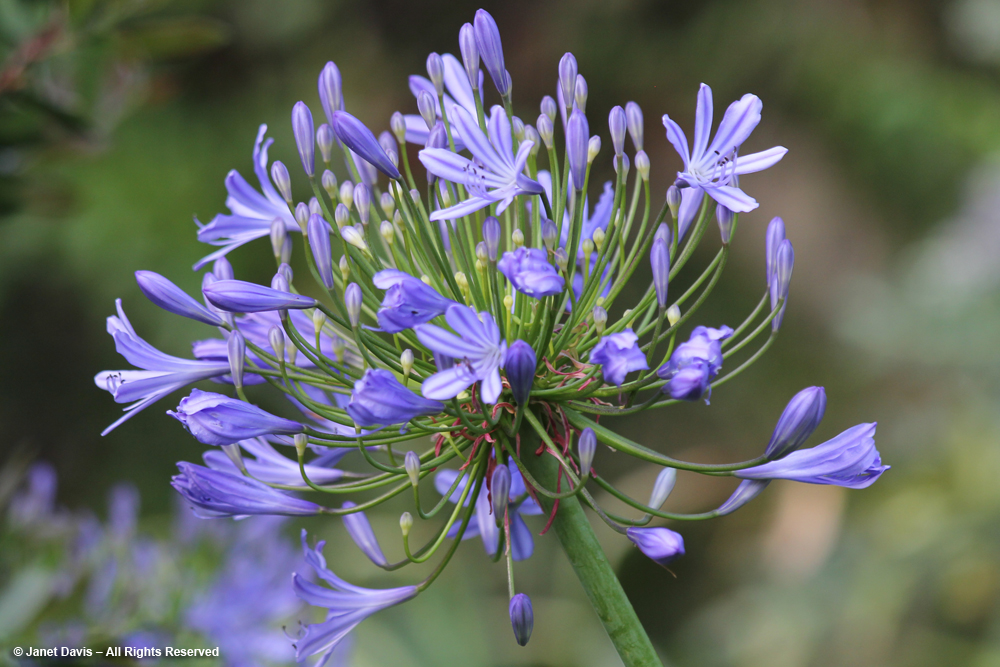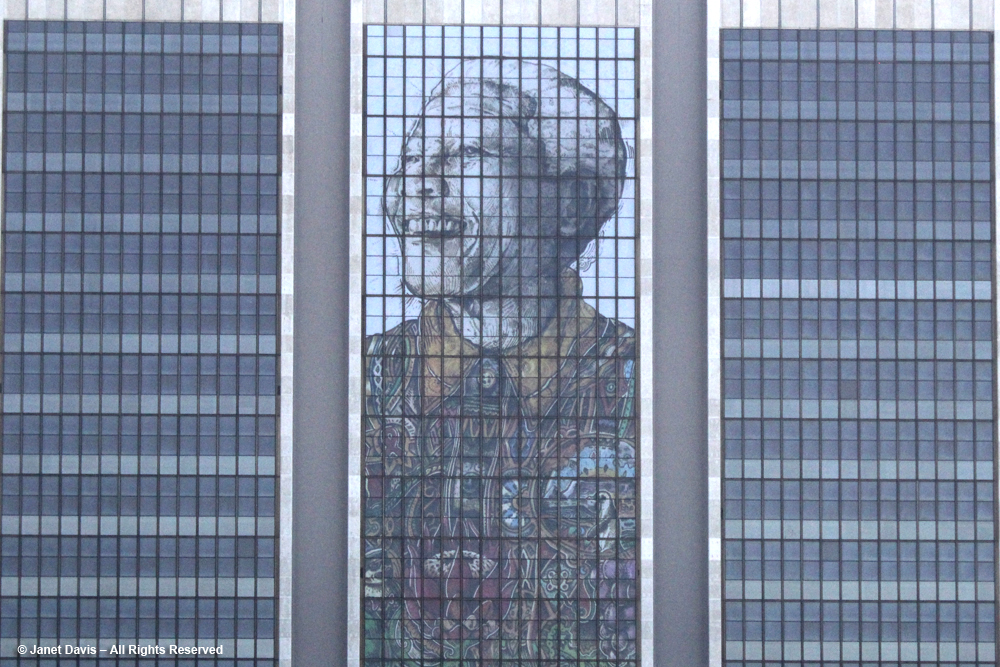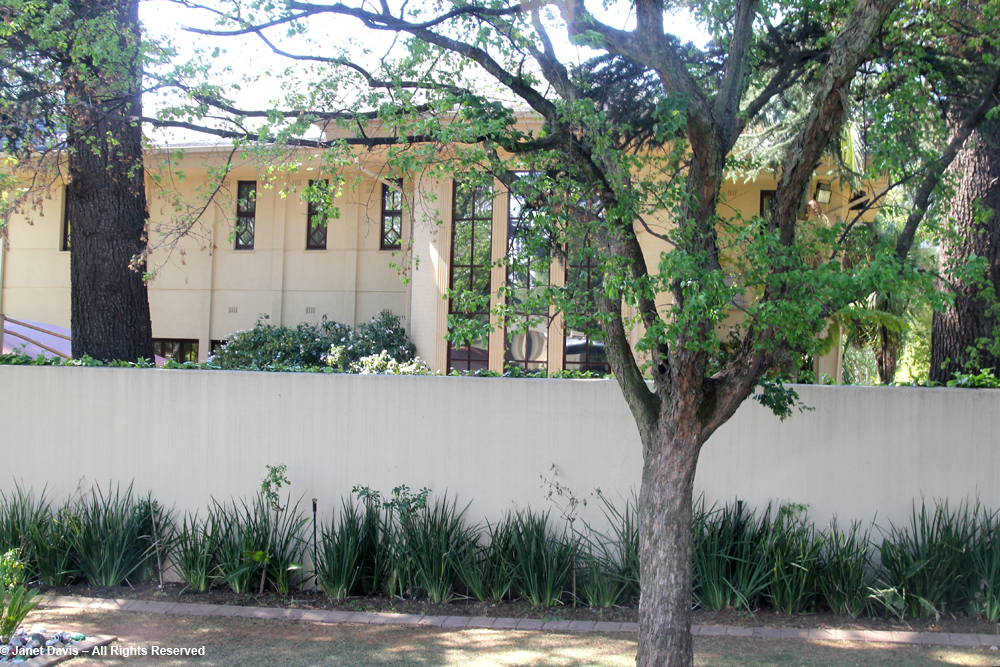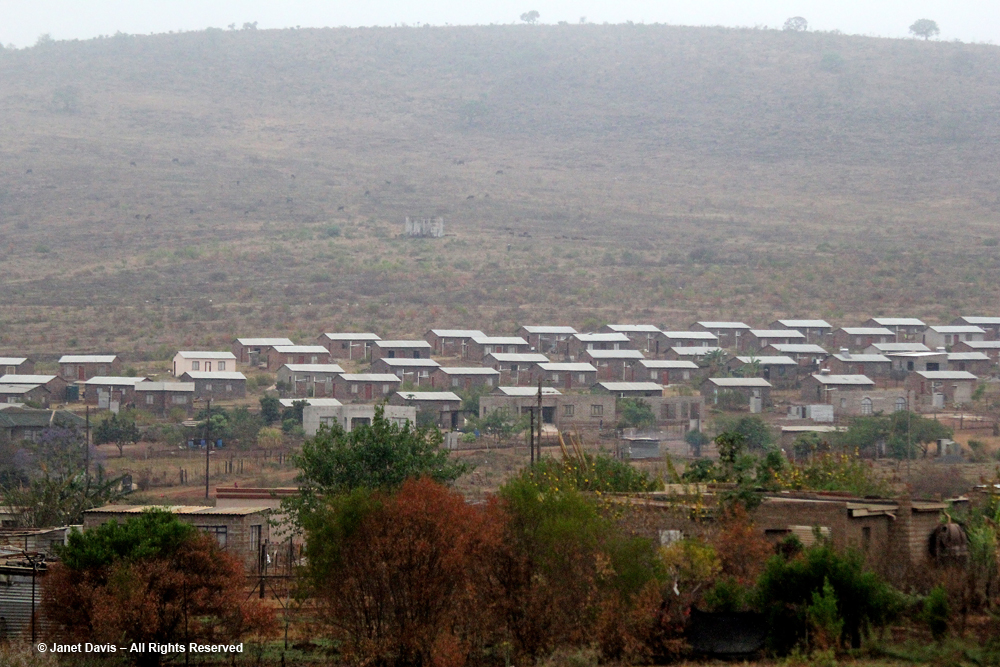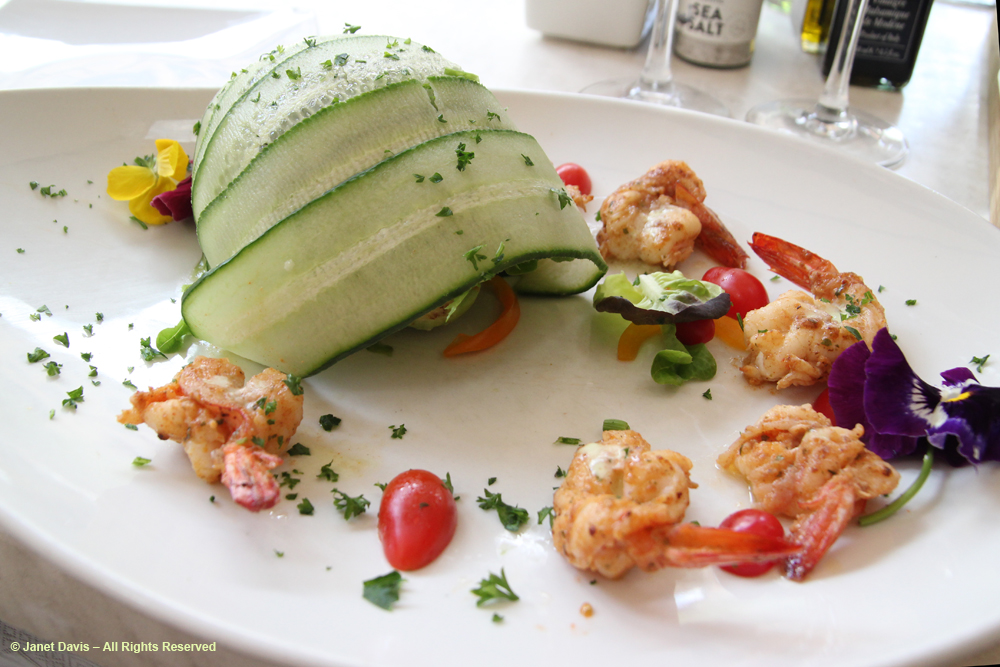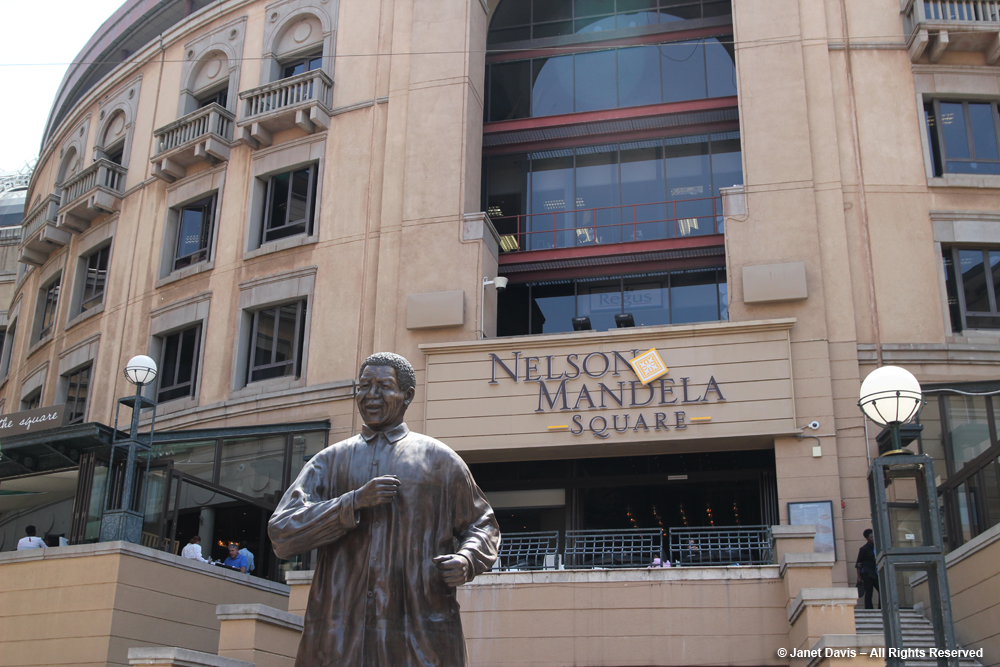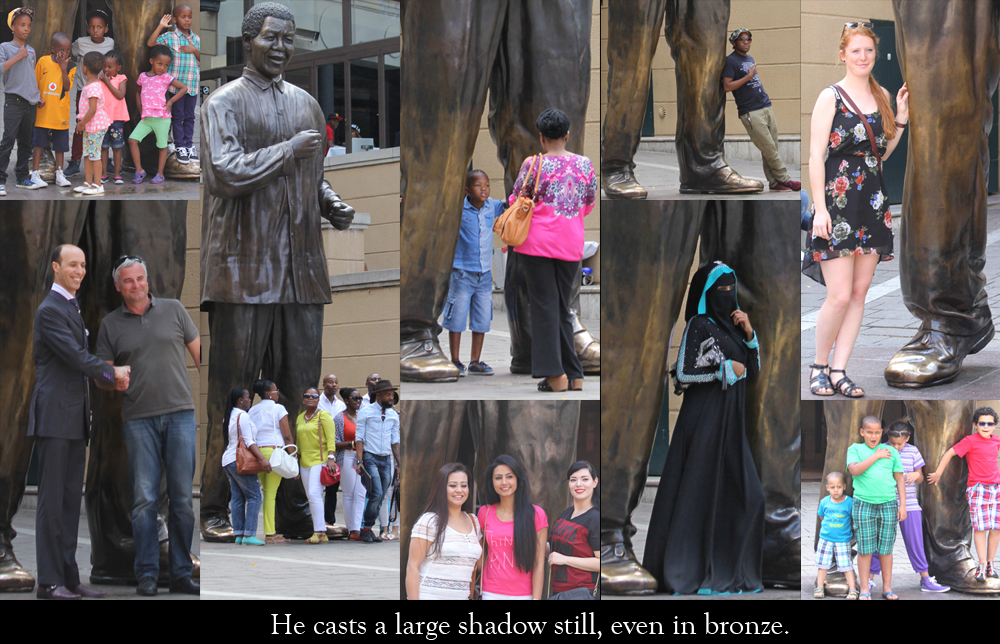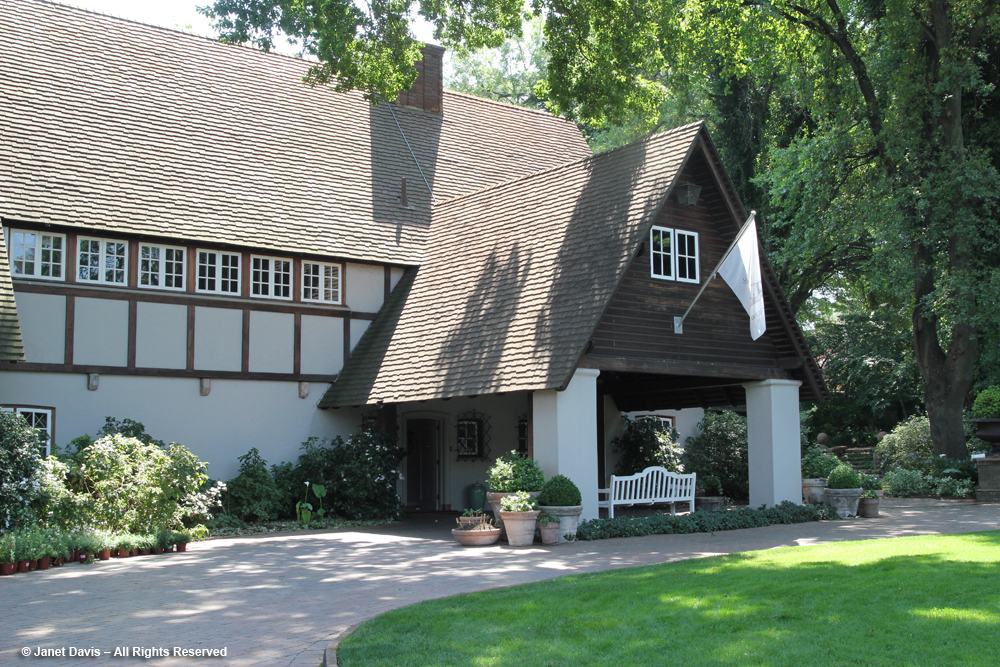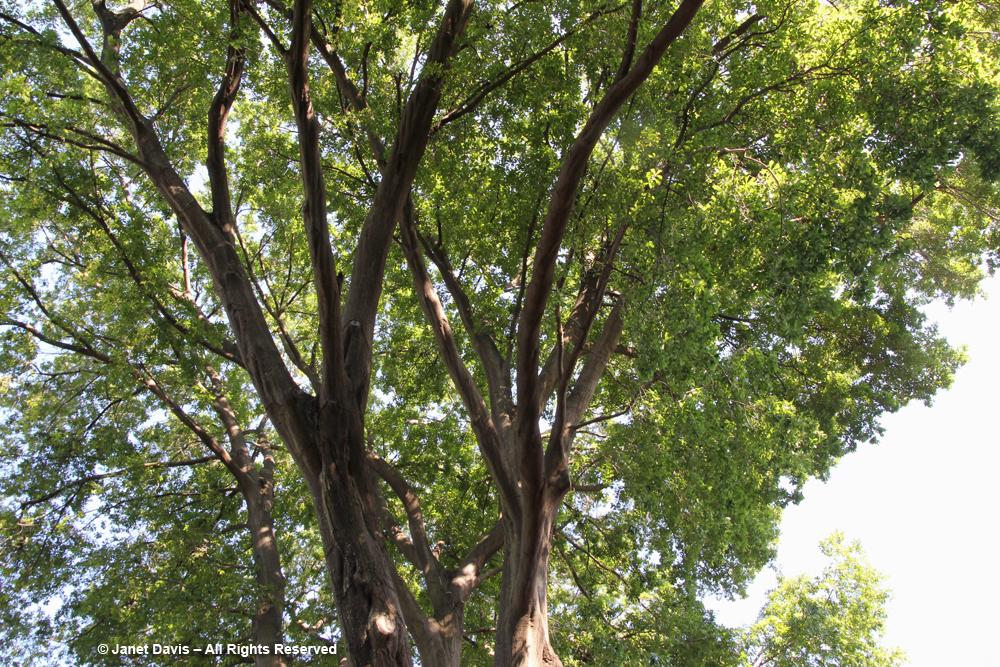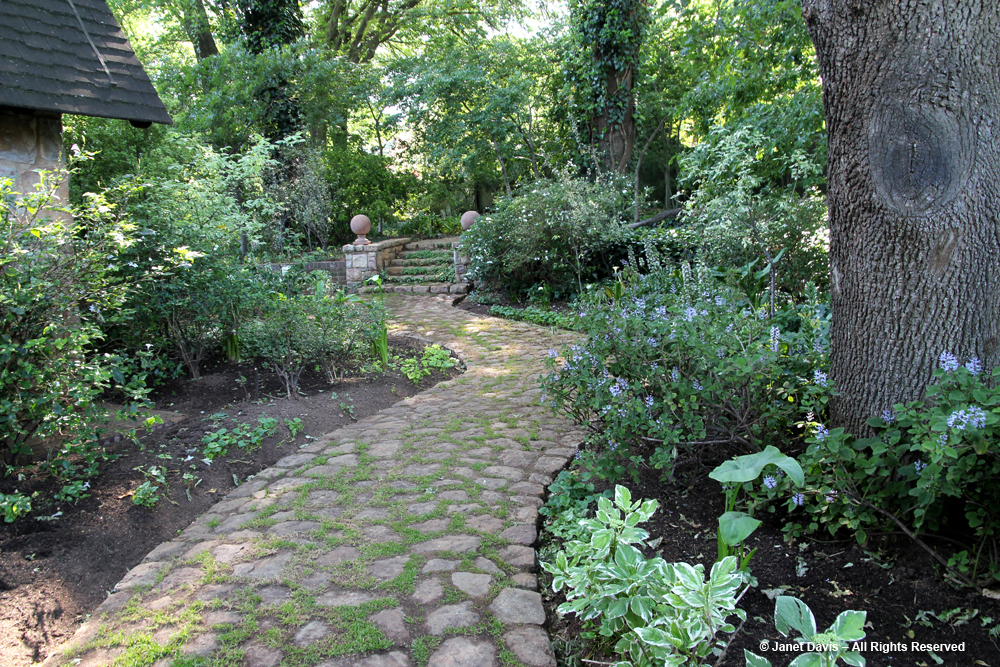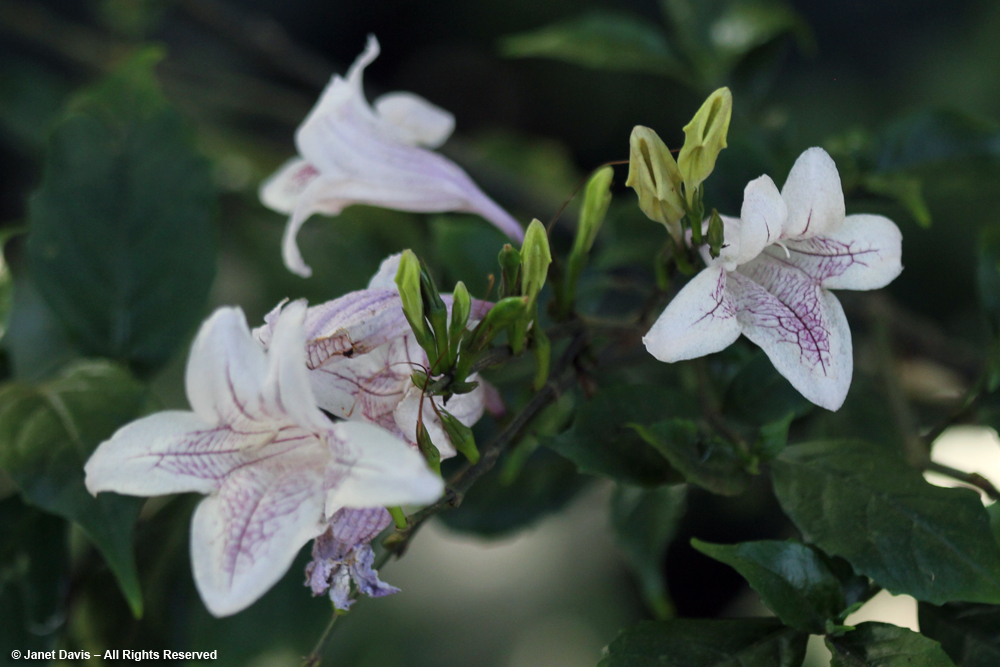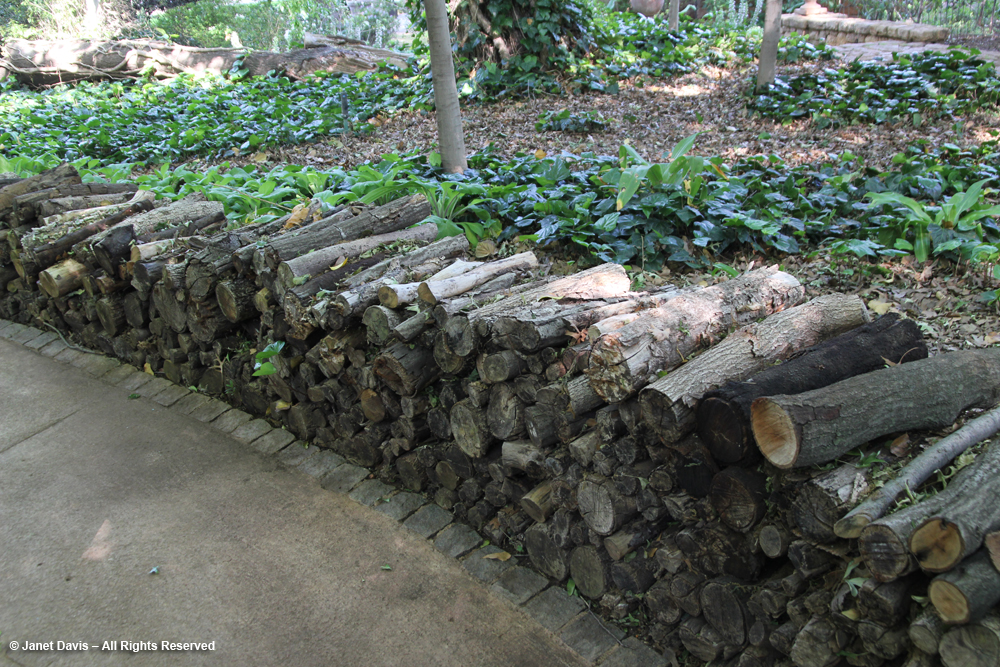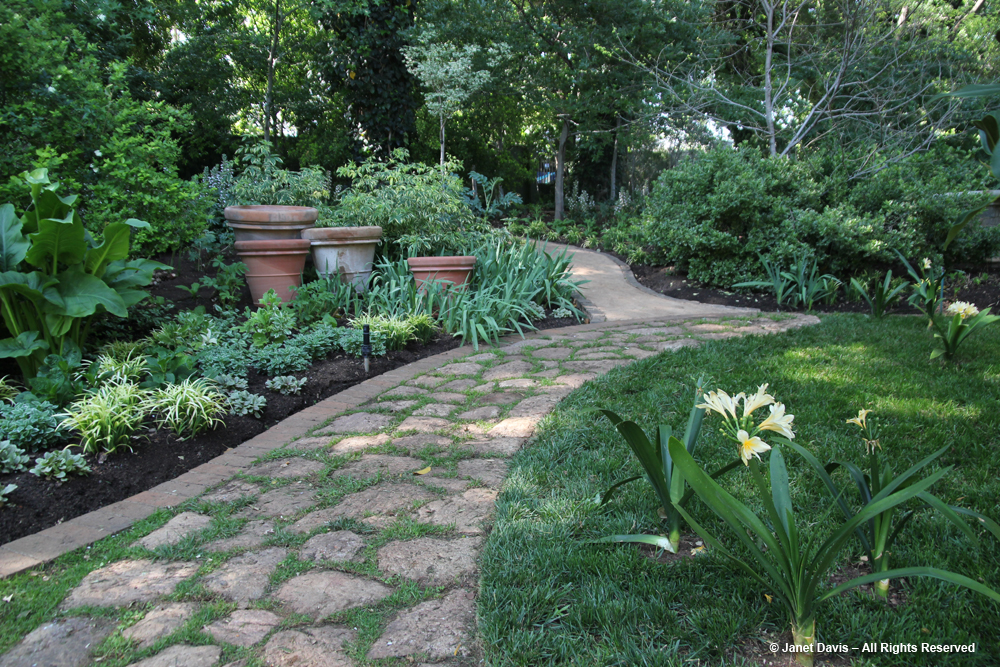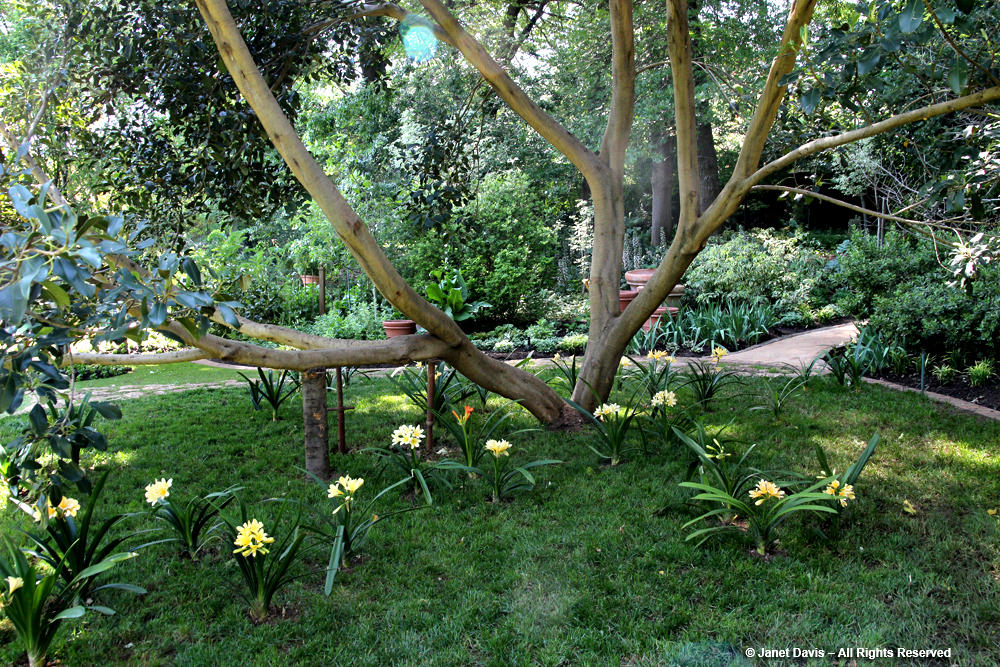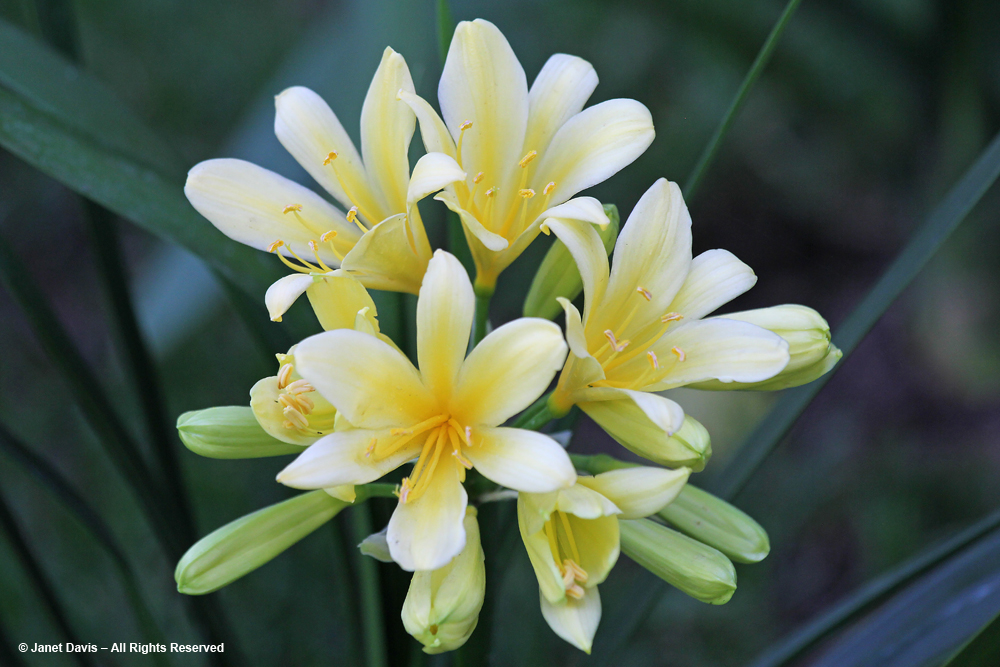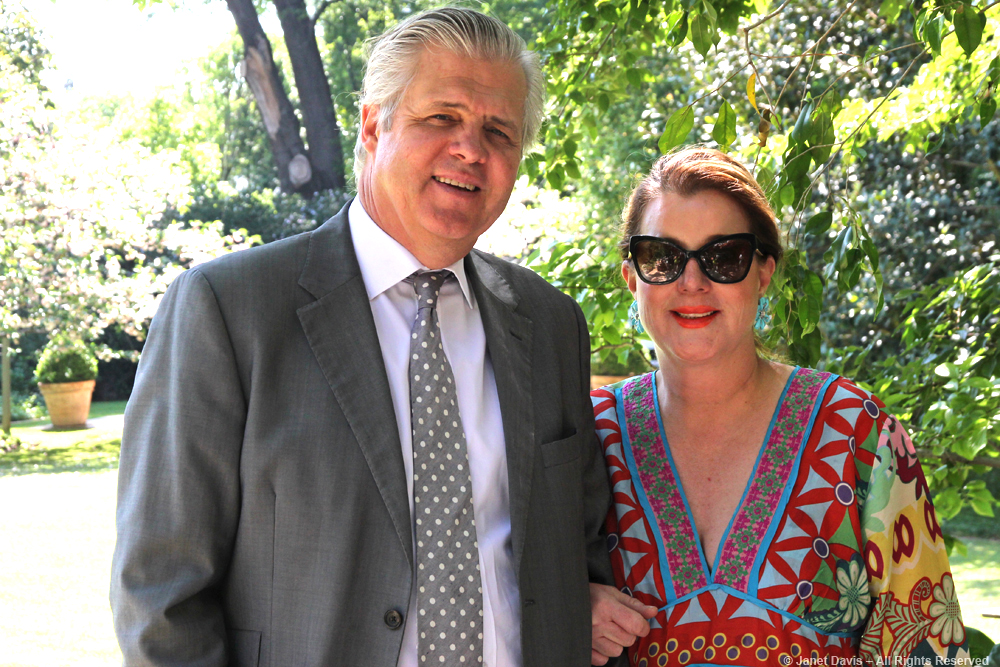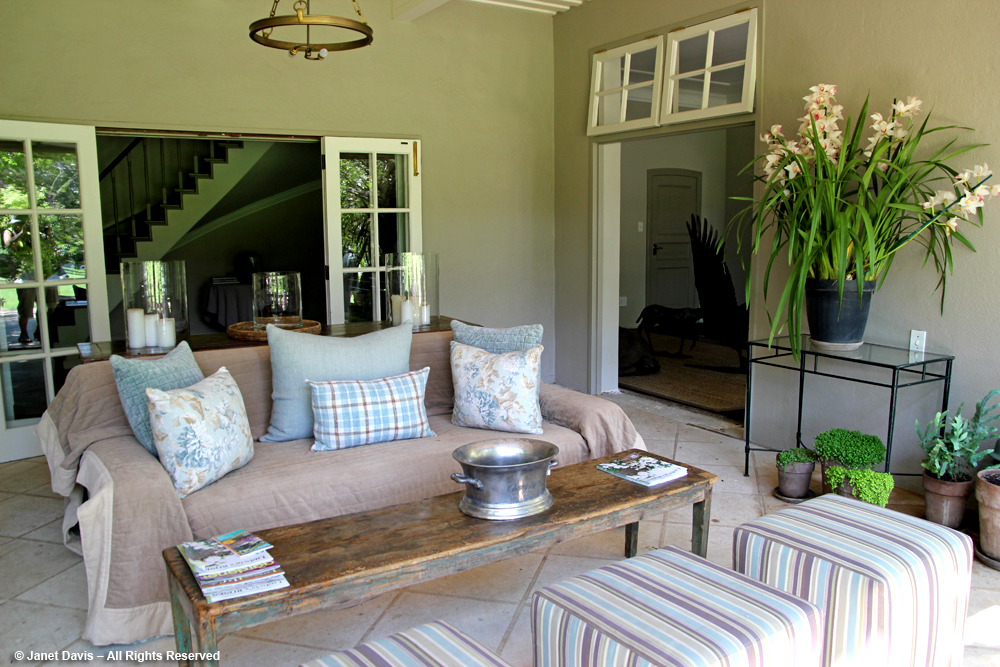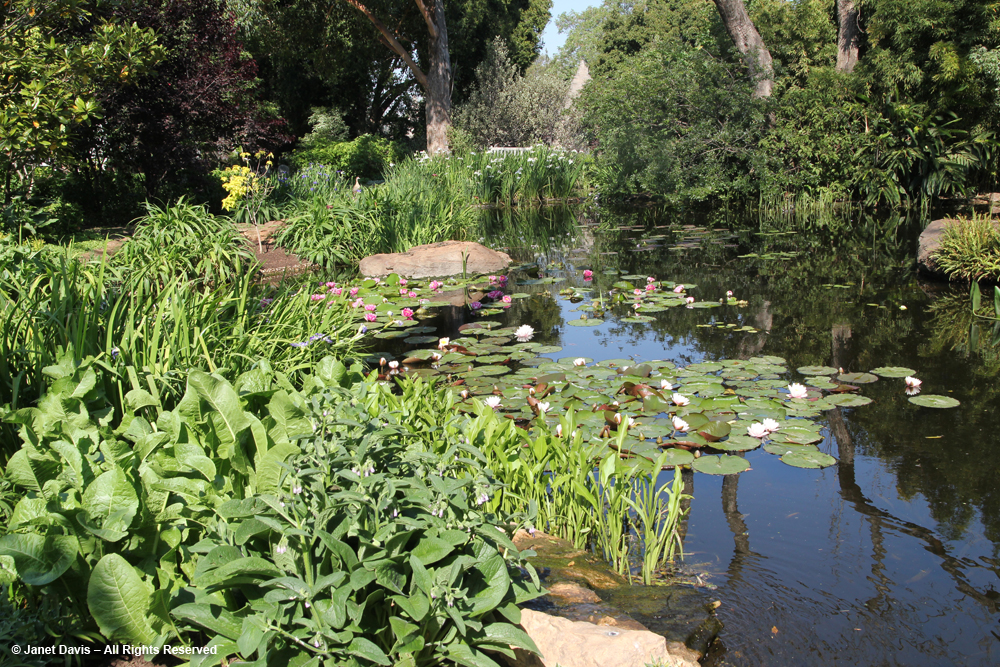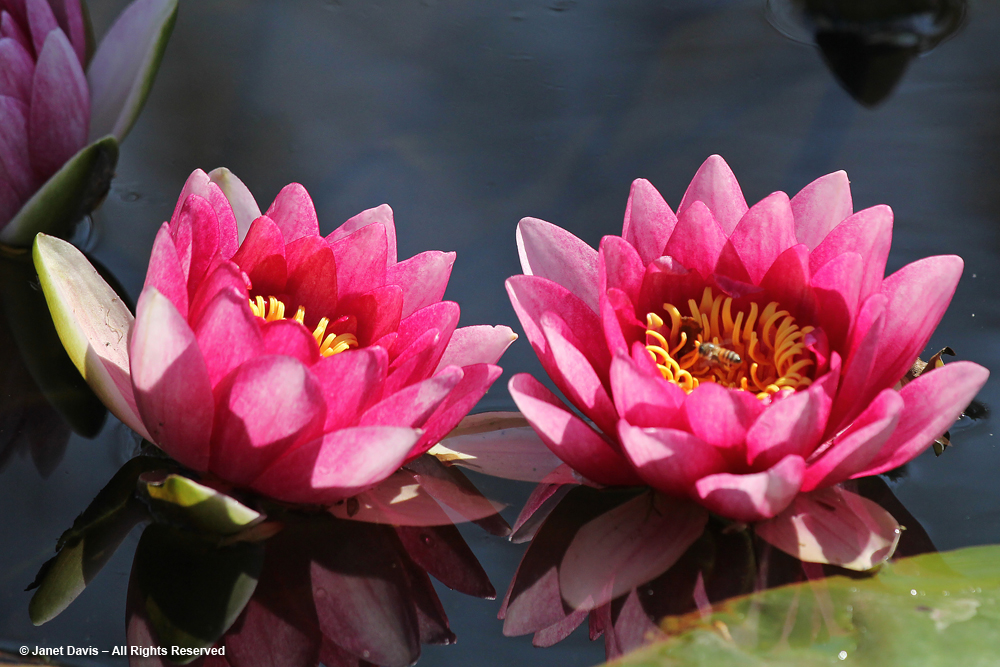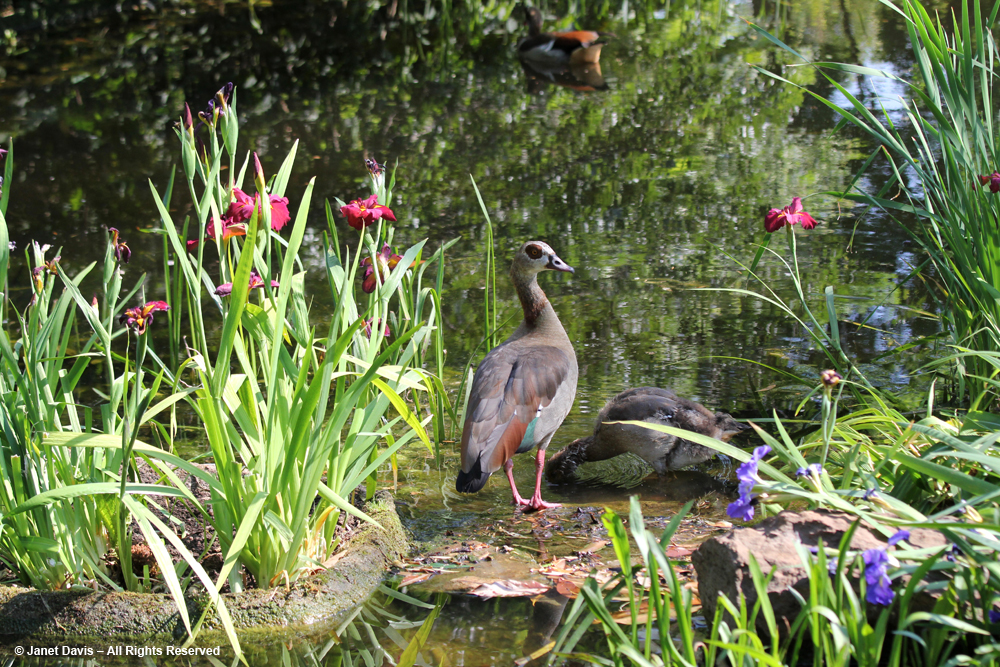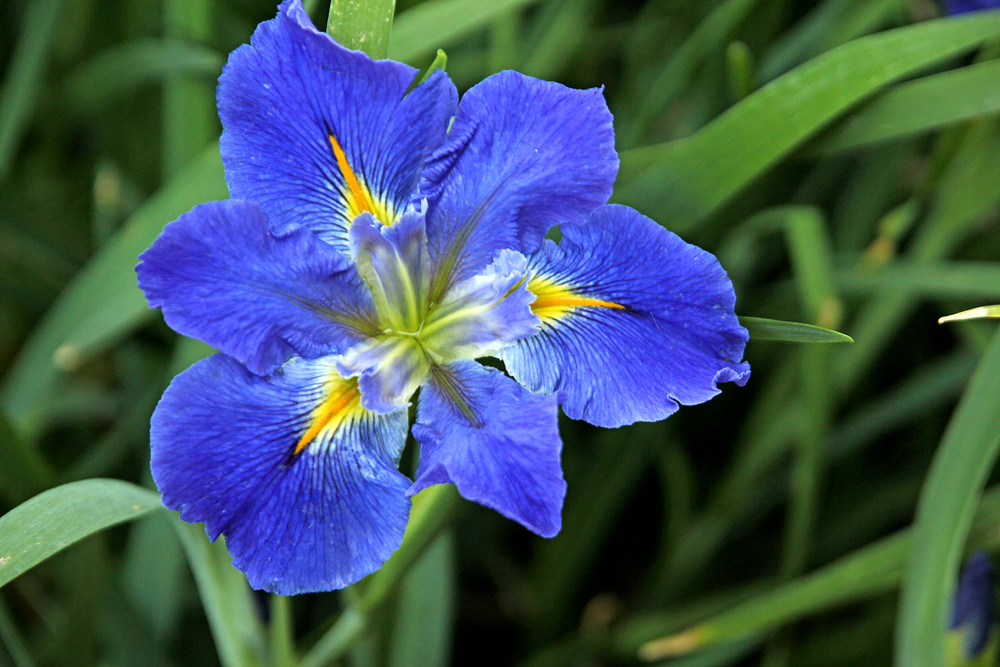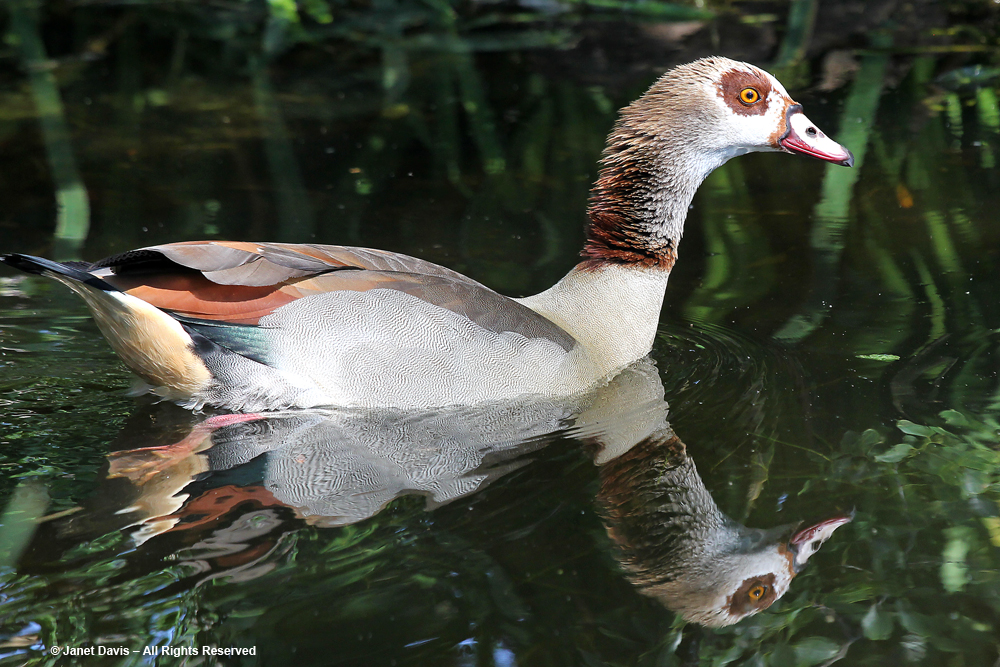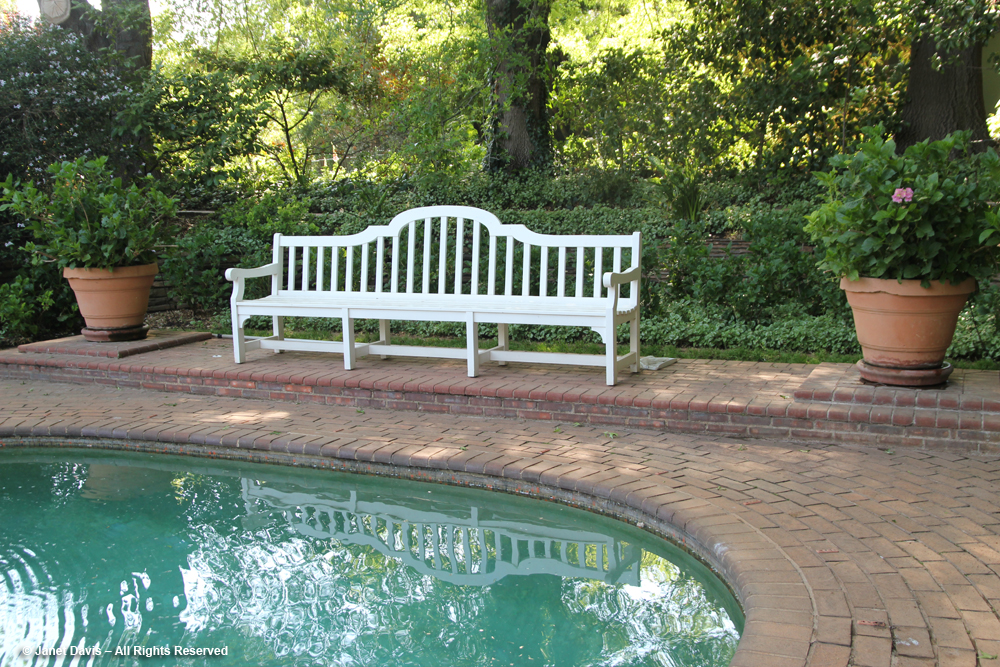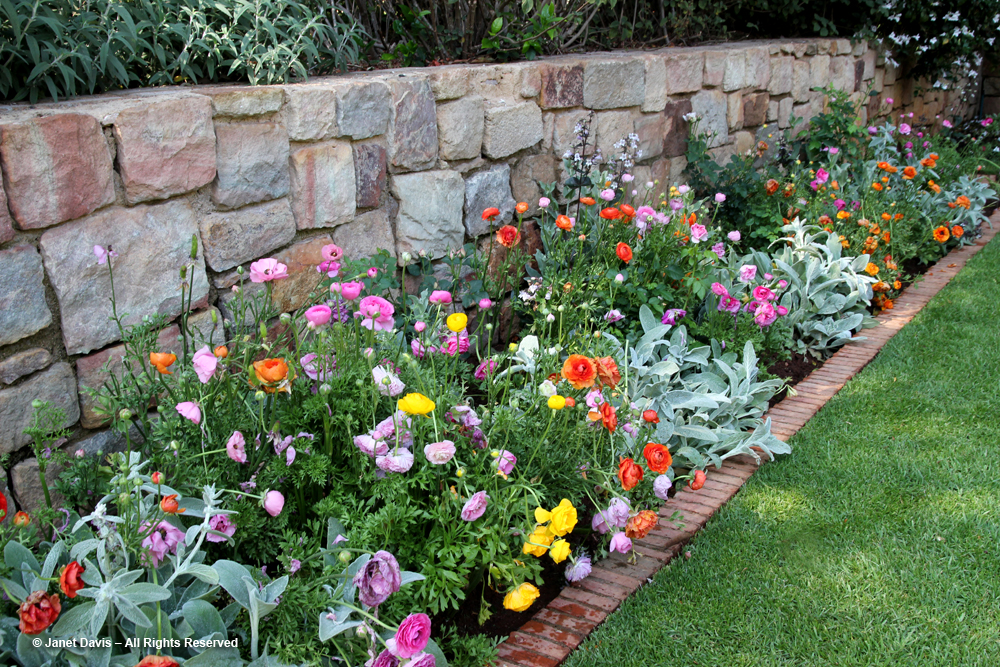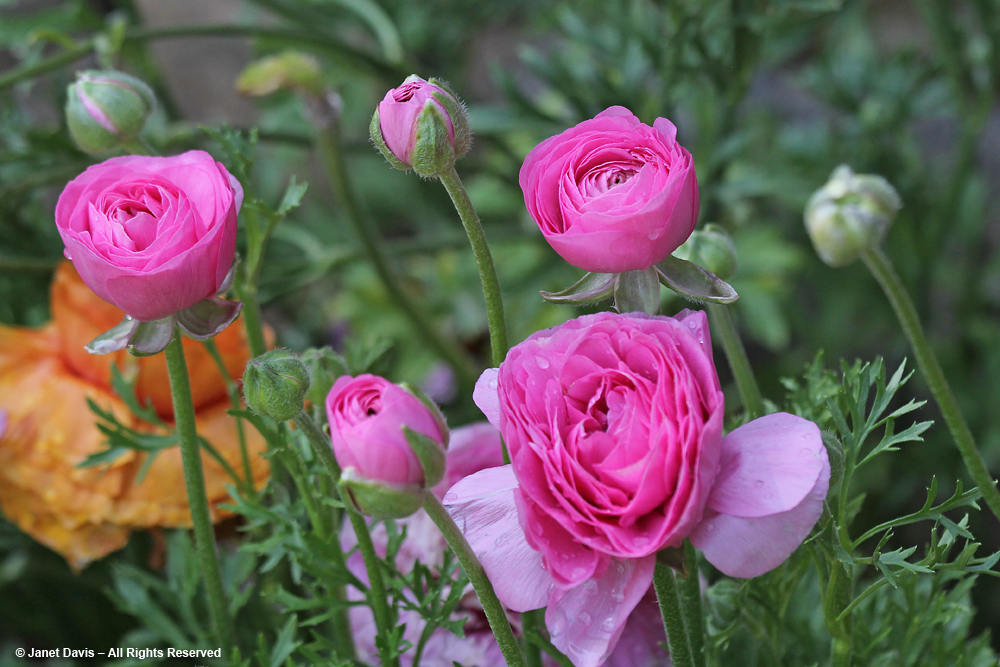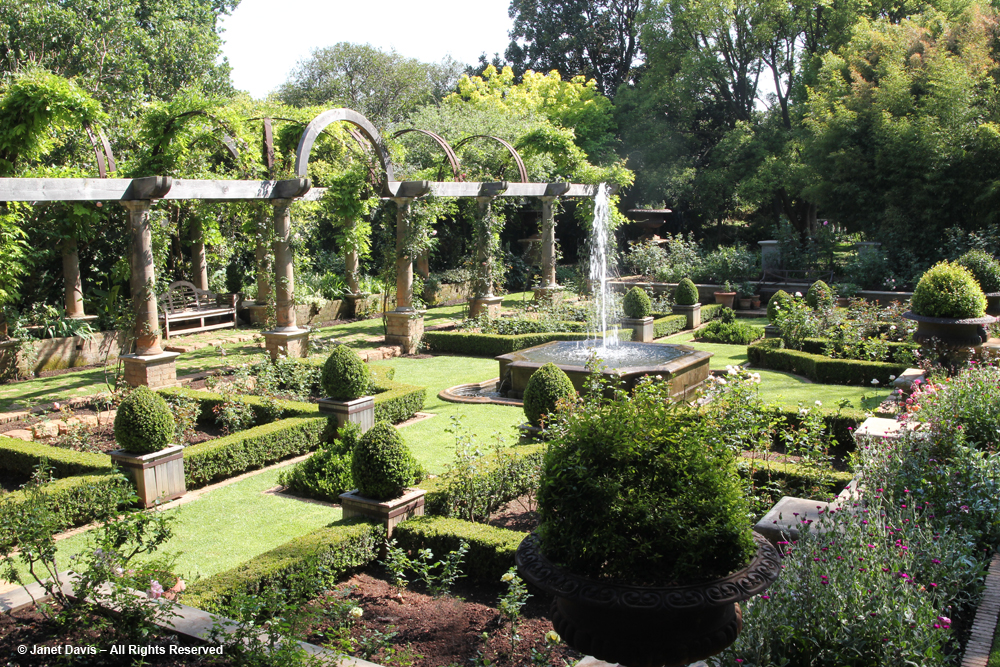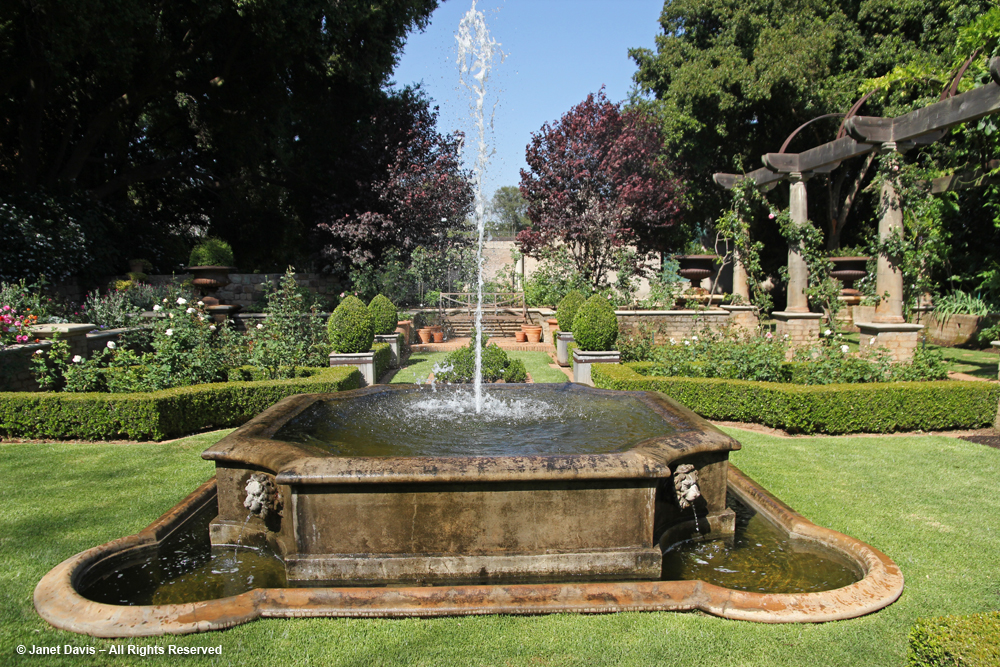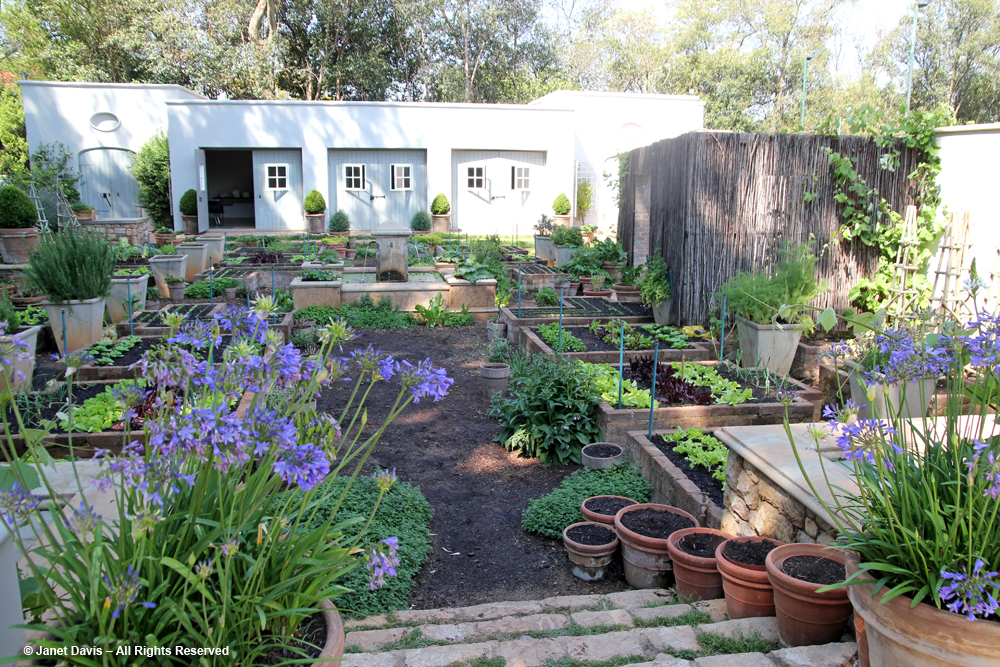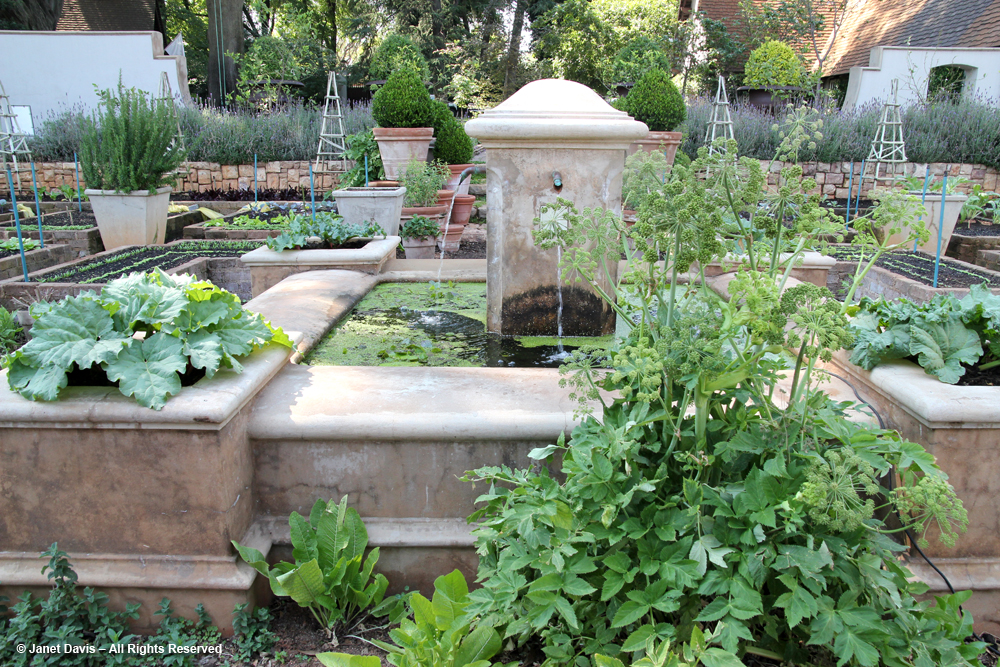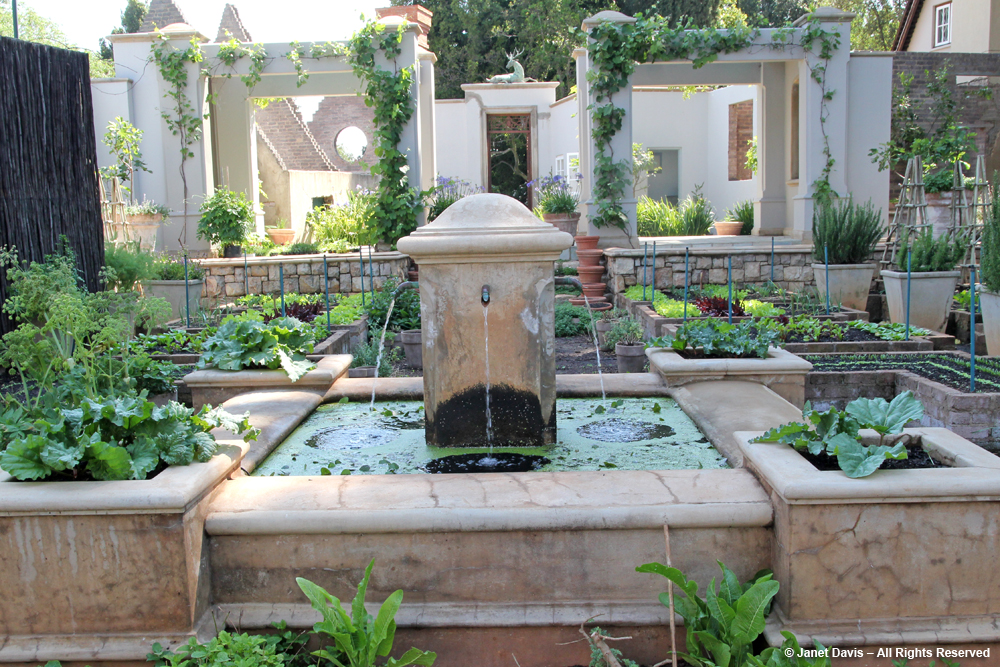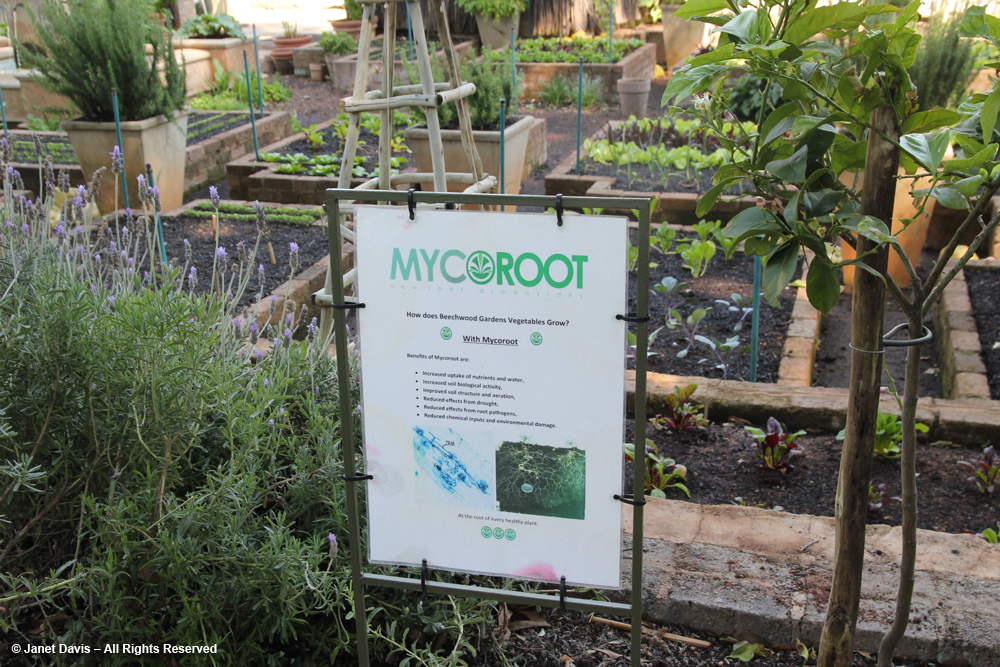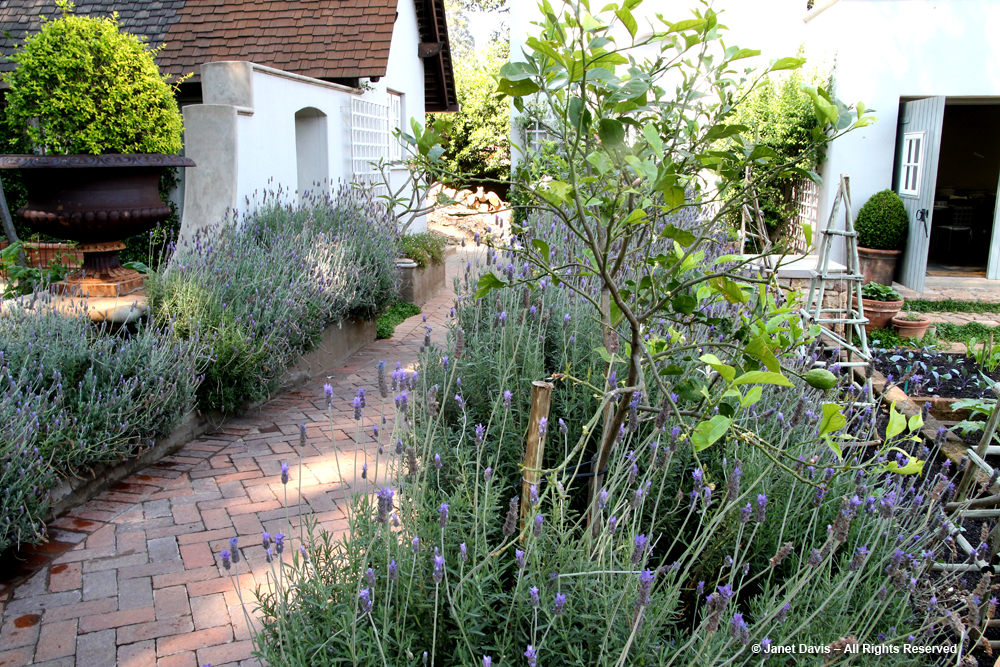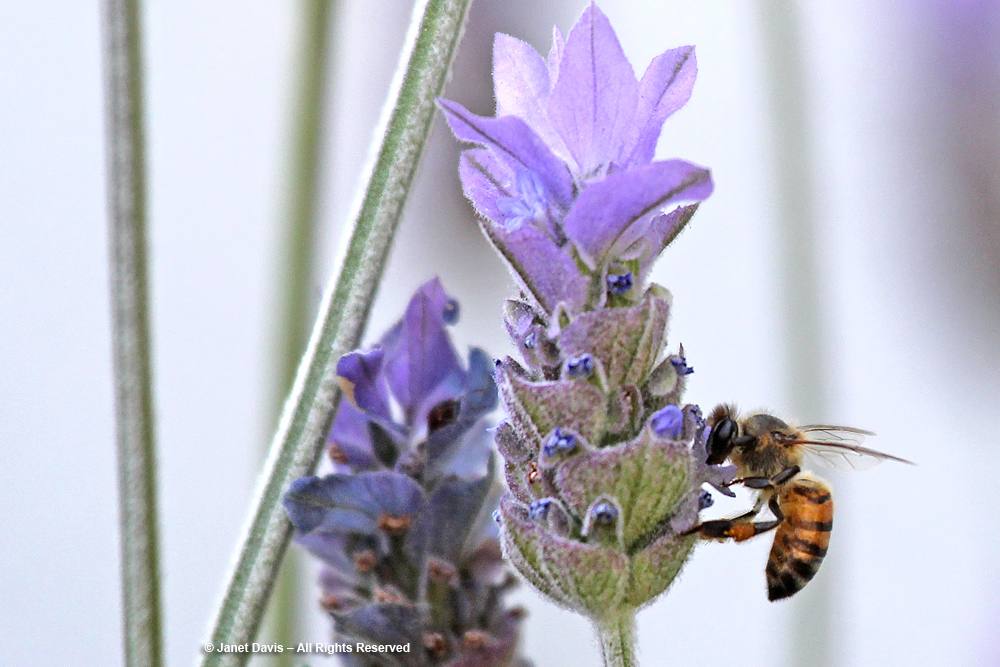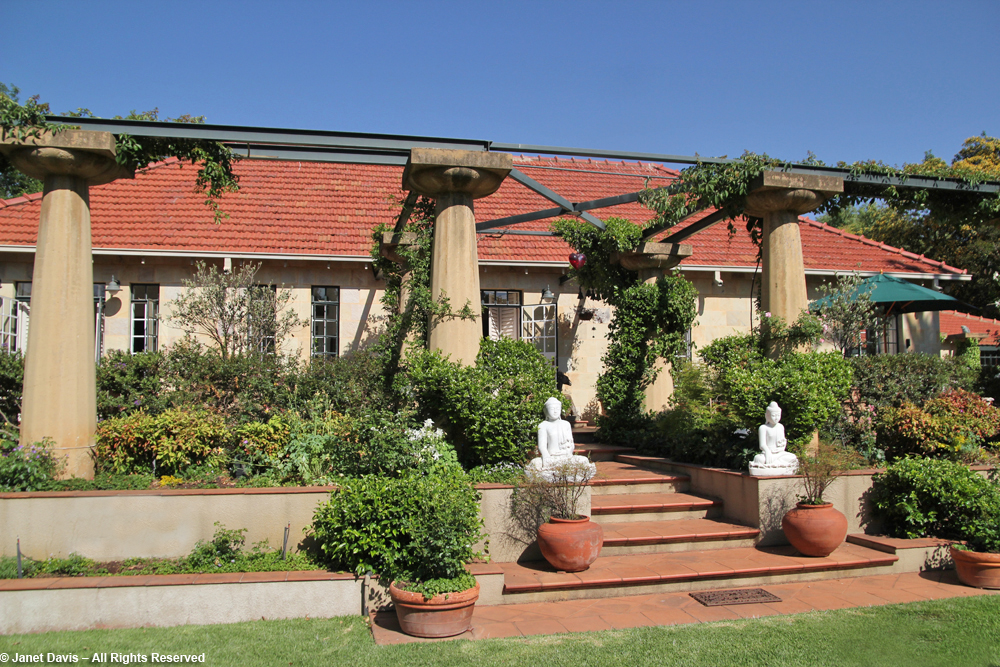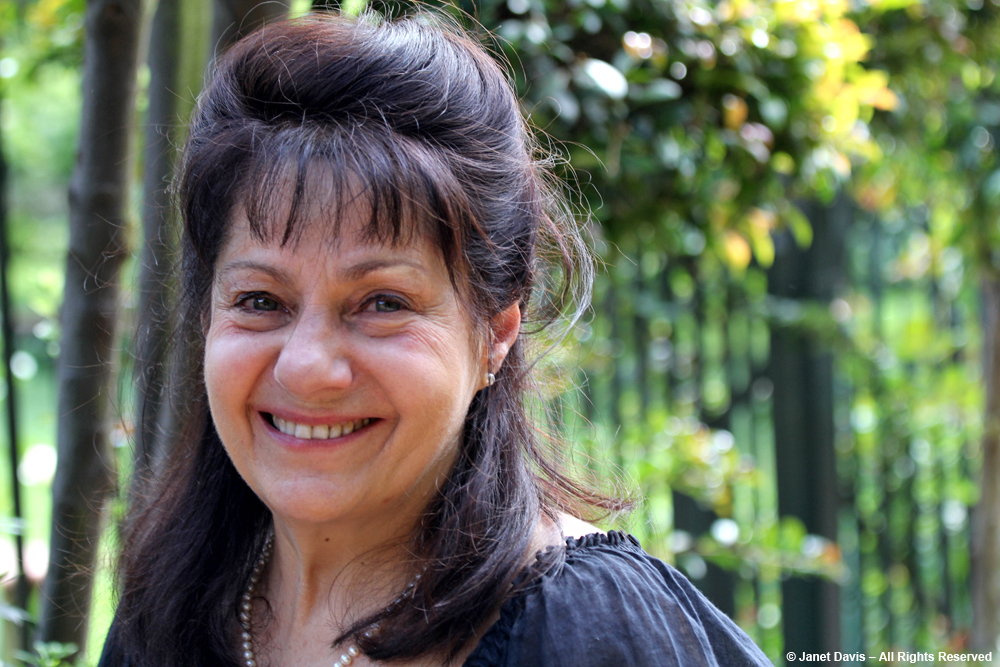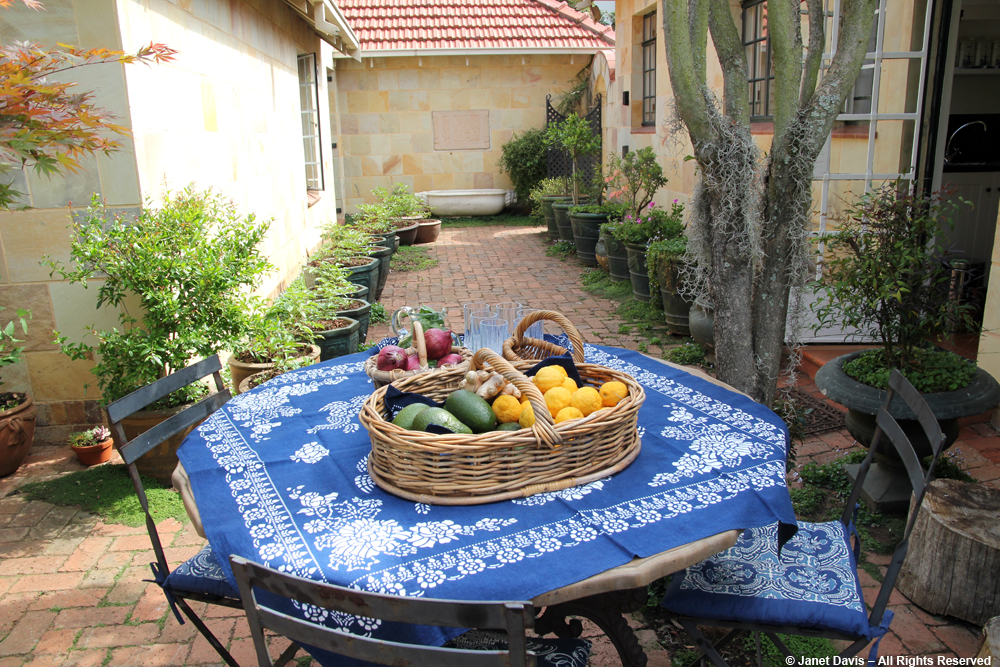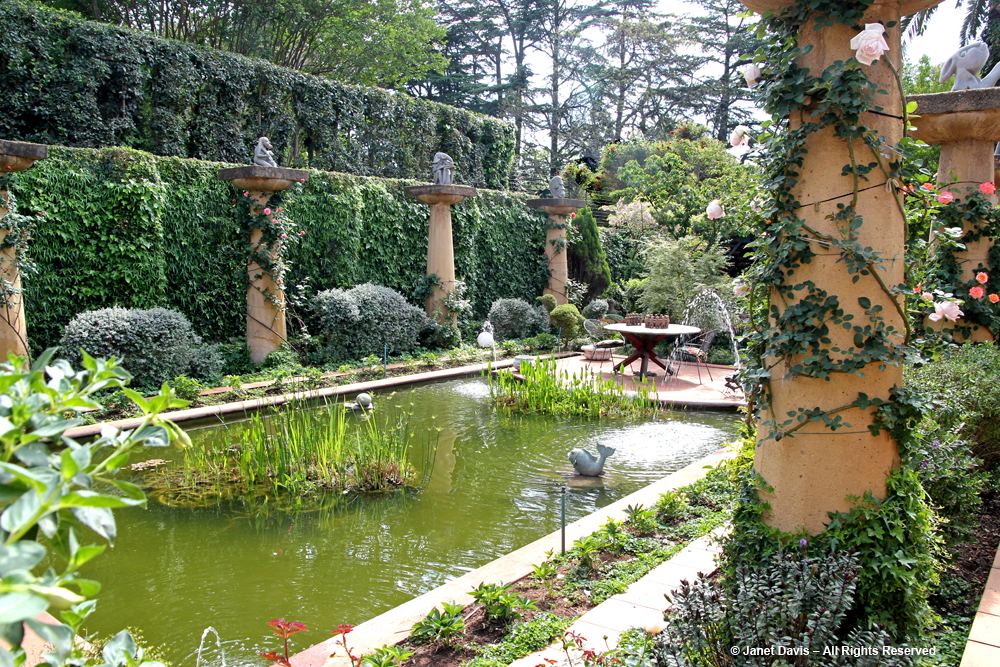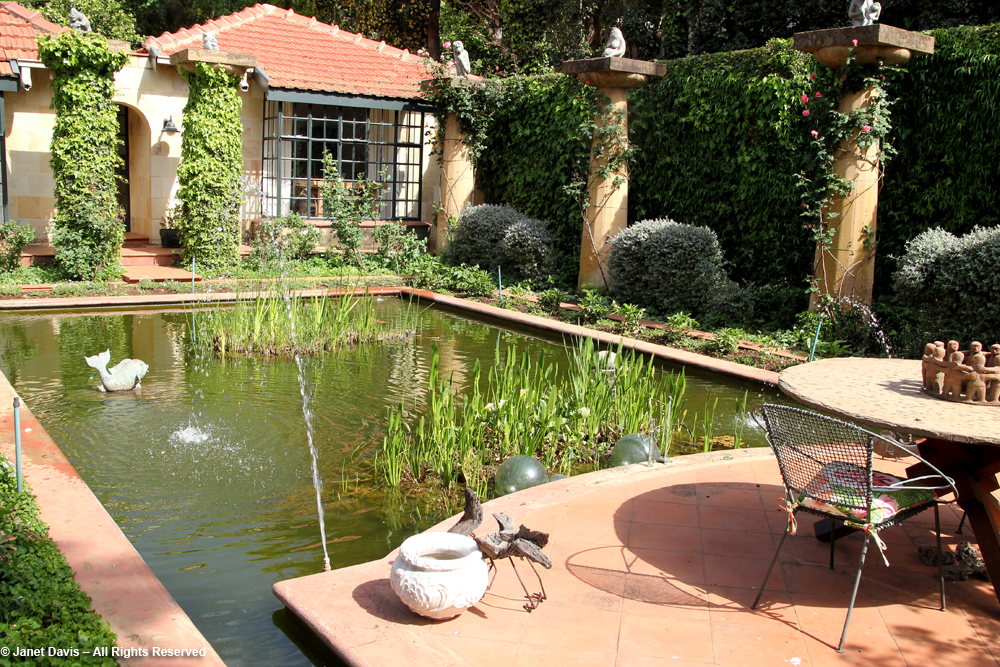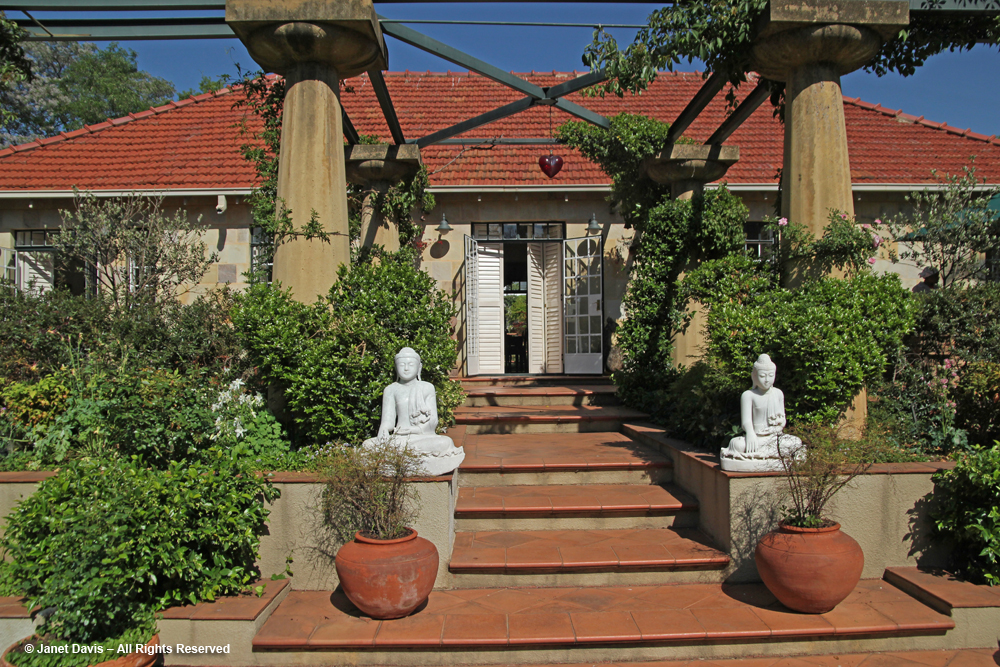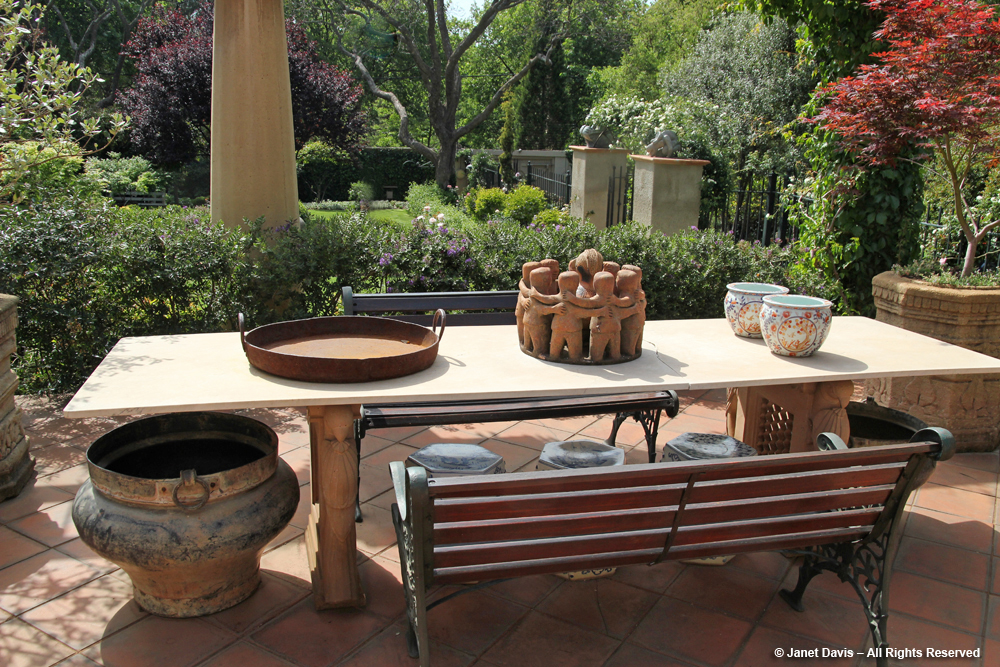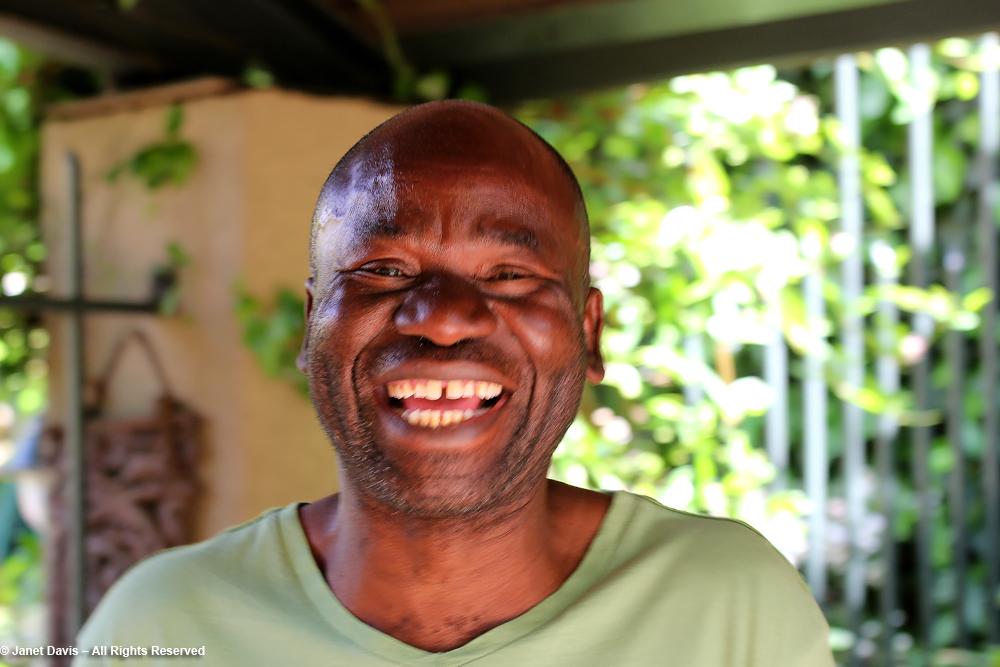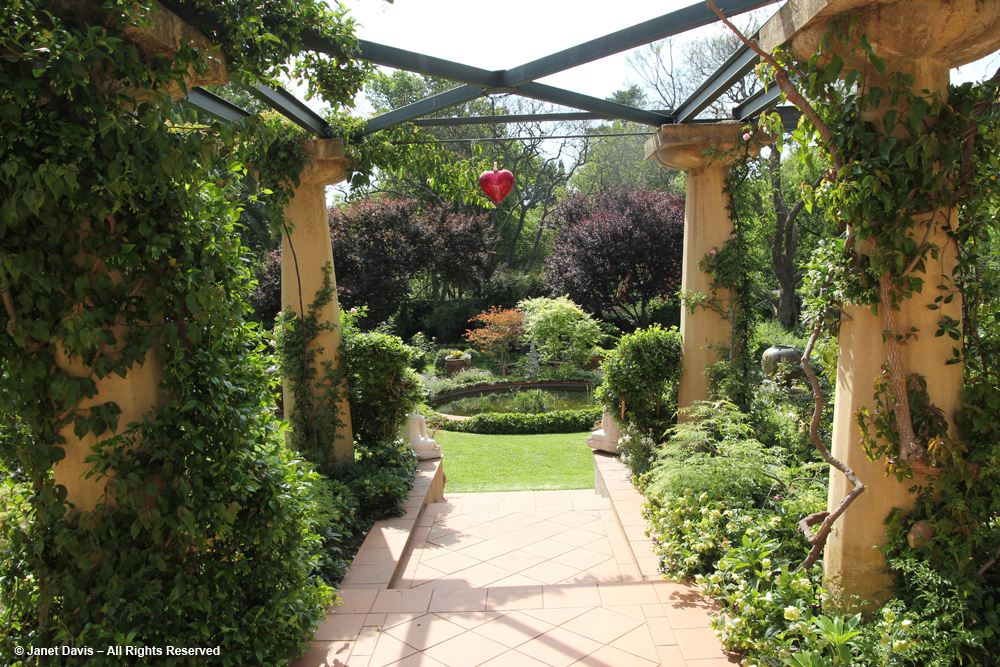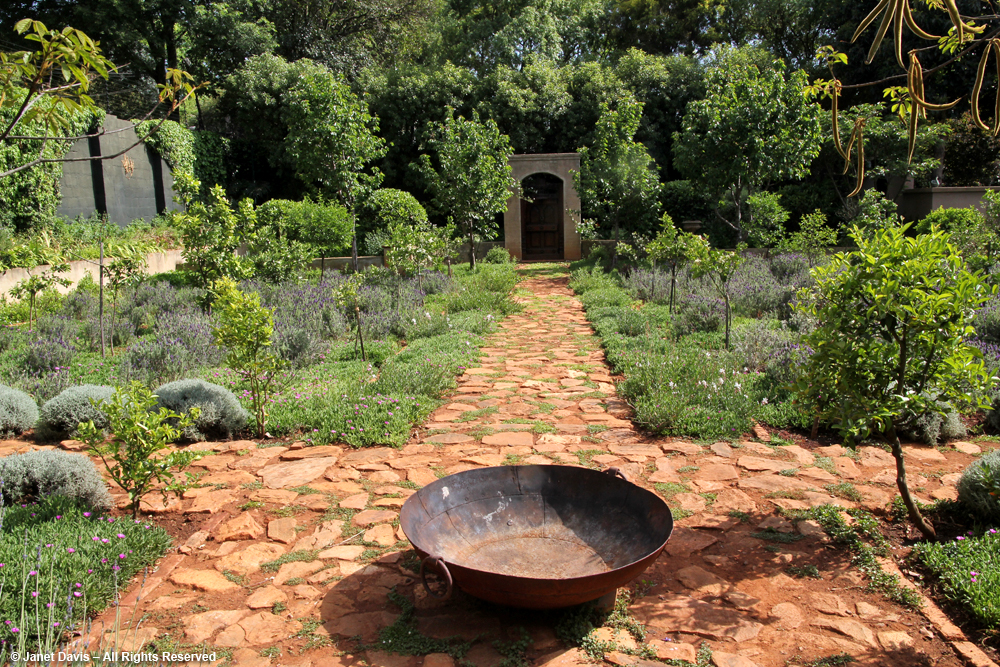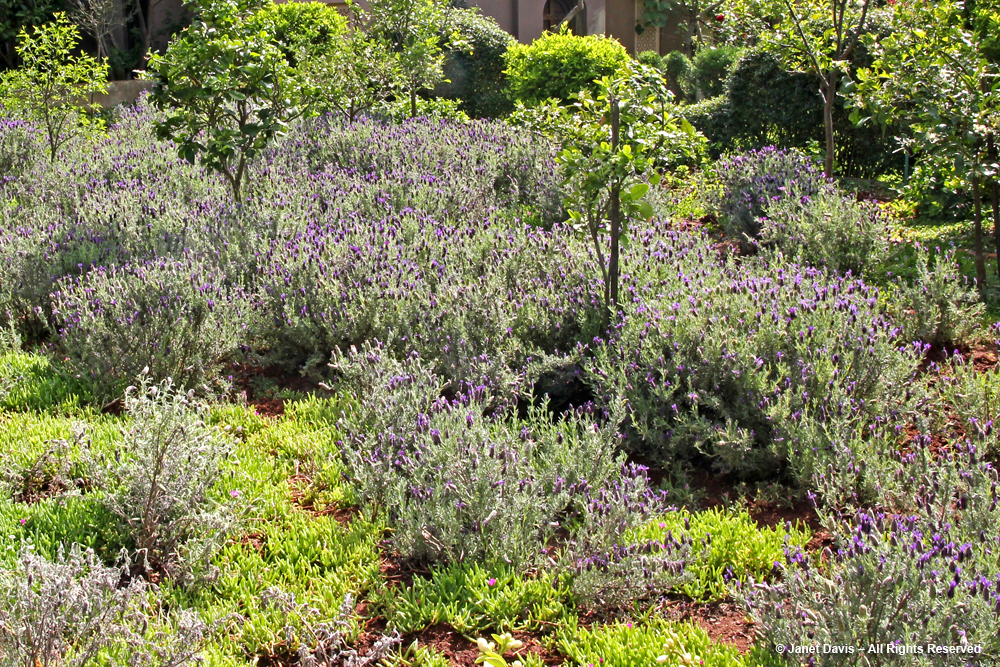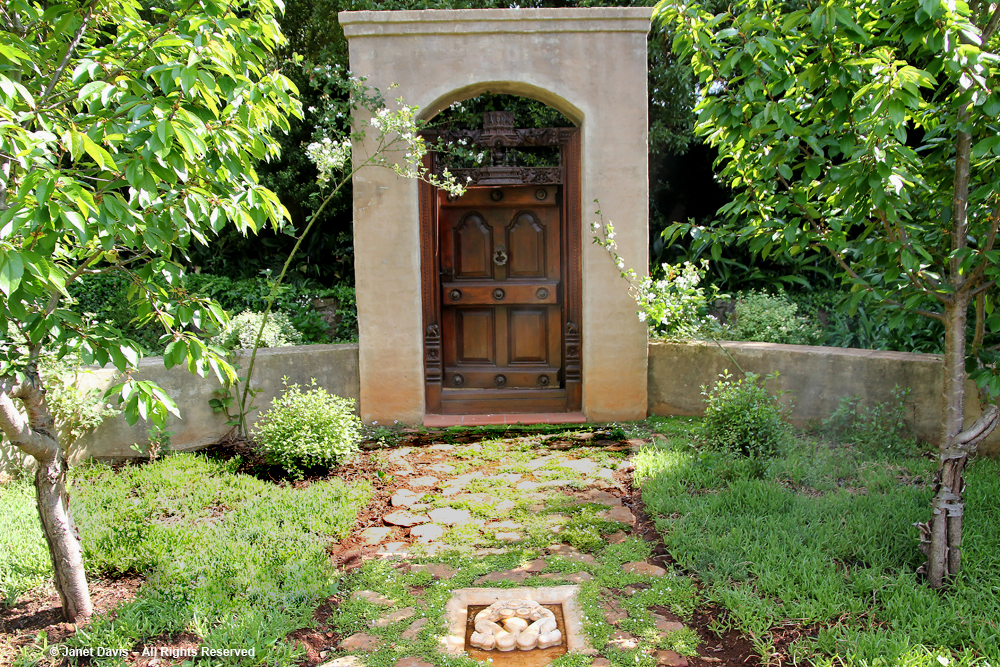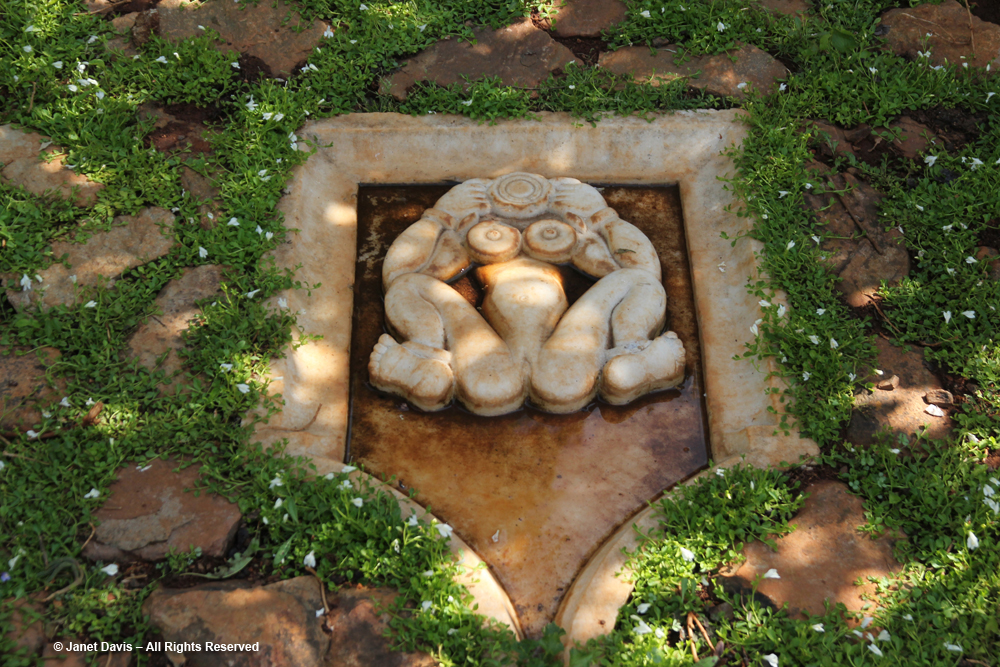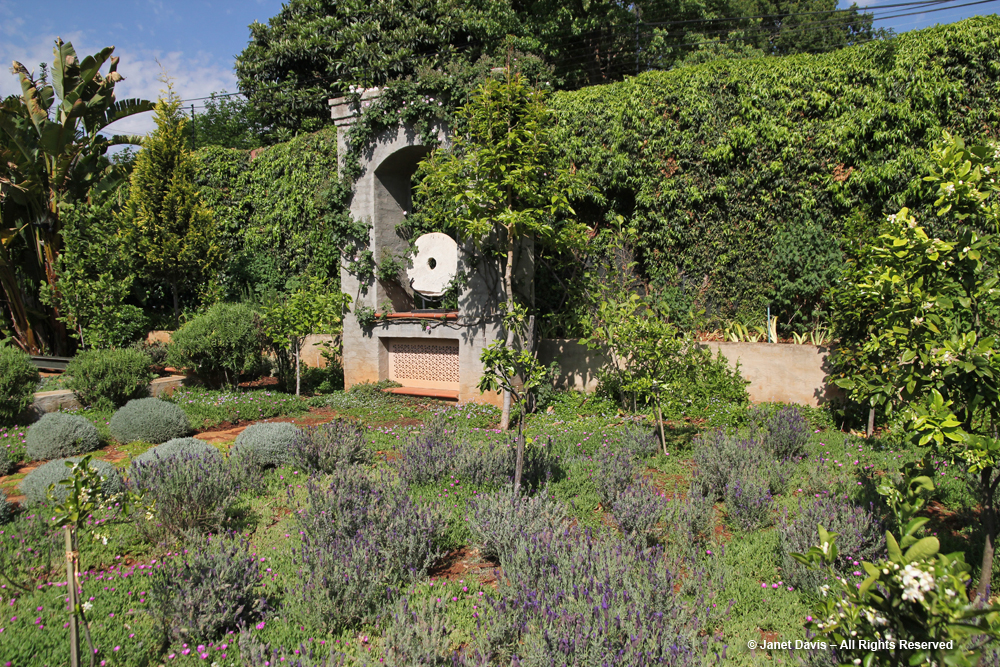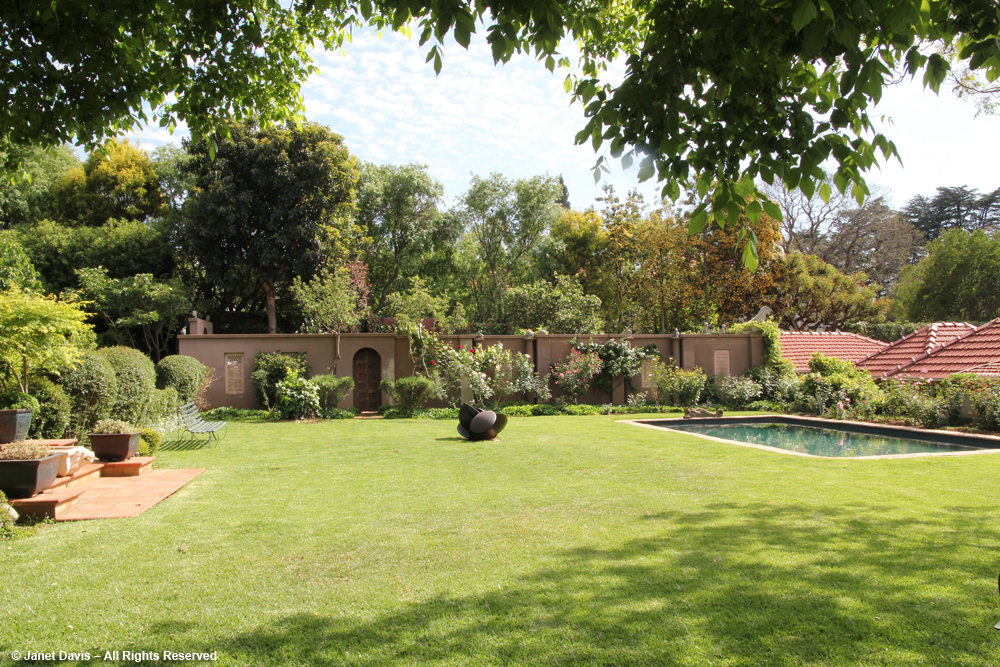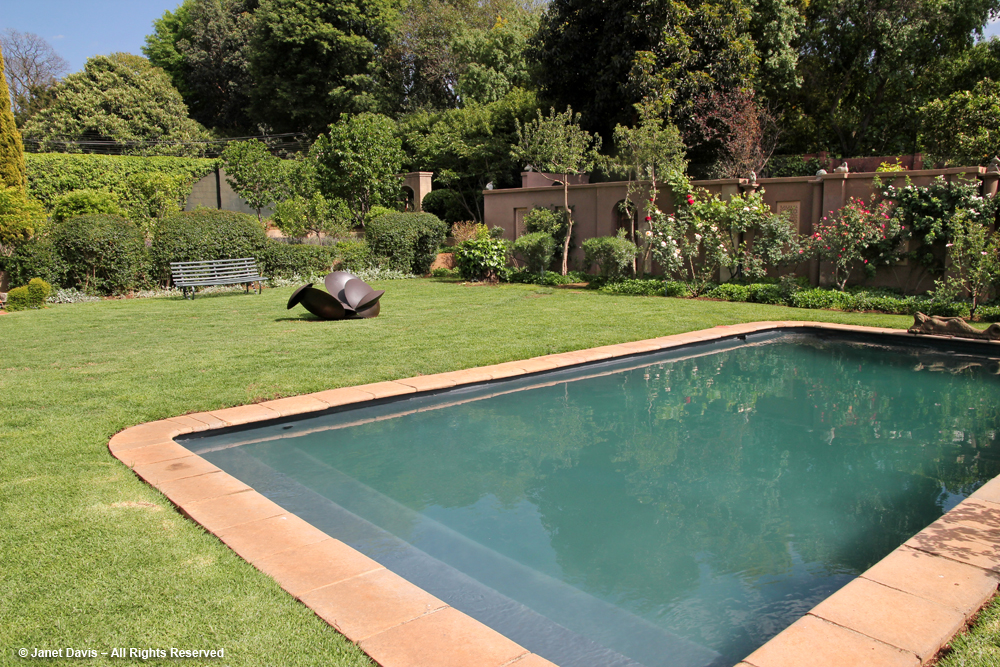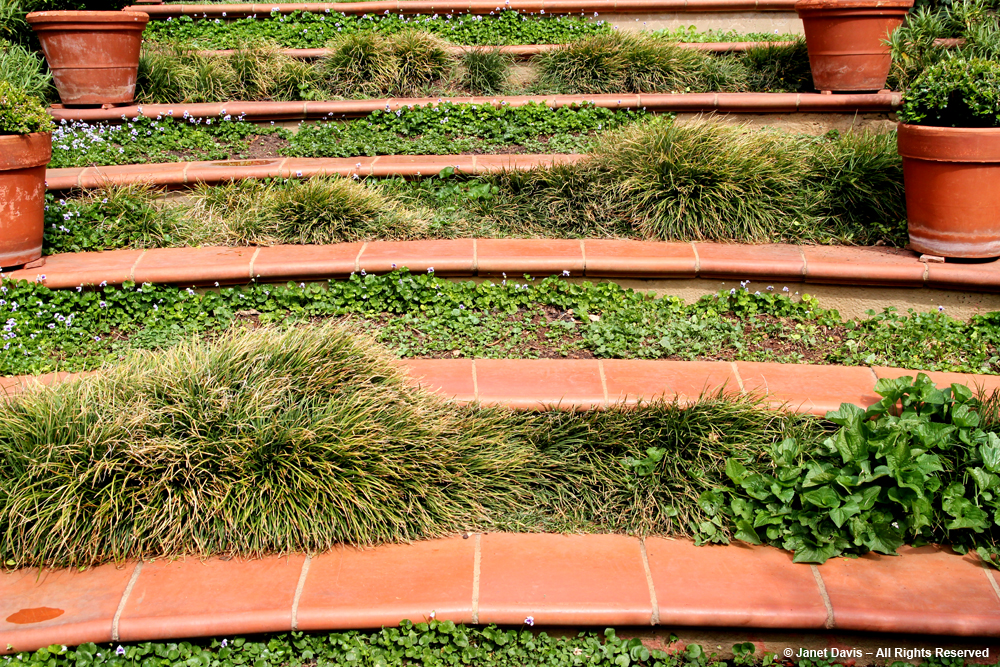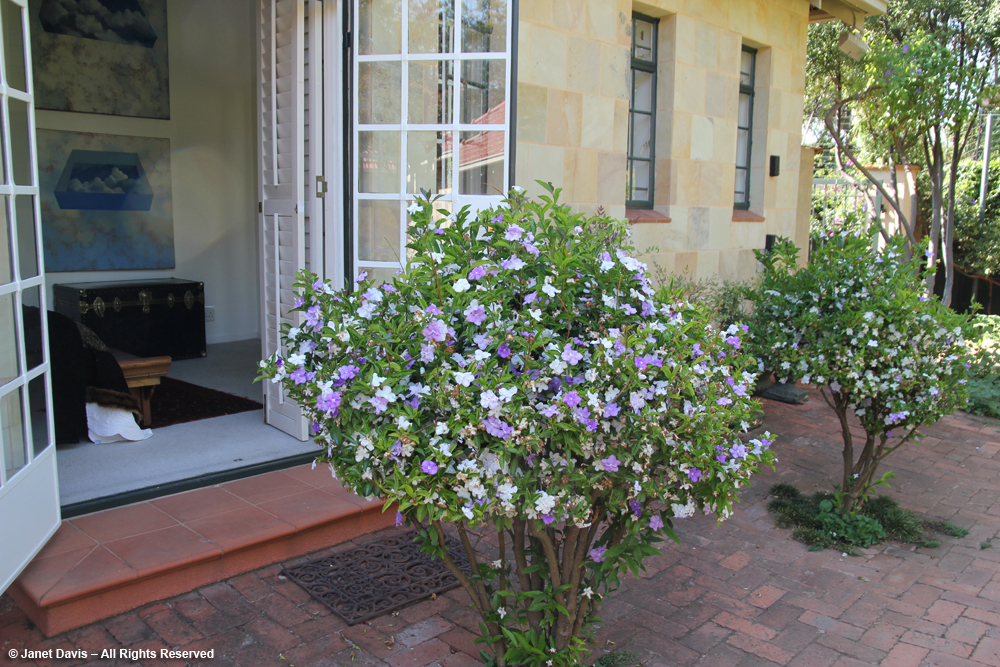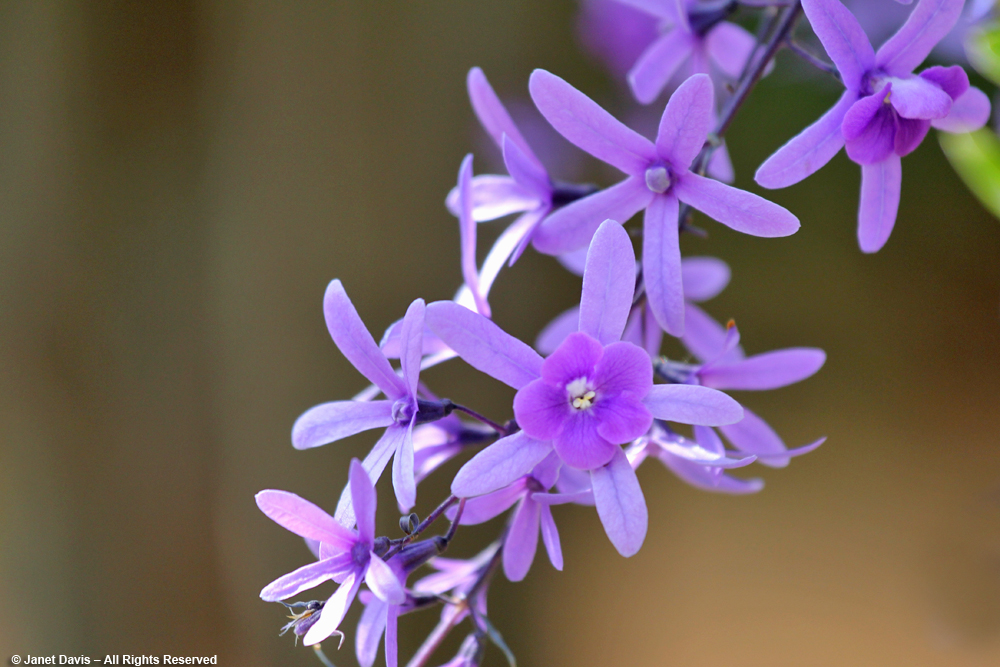Our second garden visit in Johannesburg was to the home of one of South Africa’s most renowned and revered artists, William Kentridge, and his wife, immunologist Dr. Anne Stanwix. From the moment you begin ascending the hairpin driveway past the shady dell of foxgloves…..
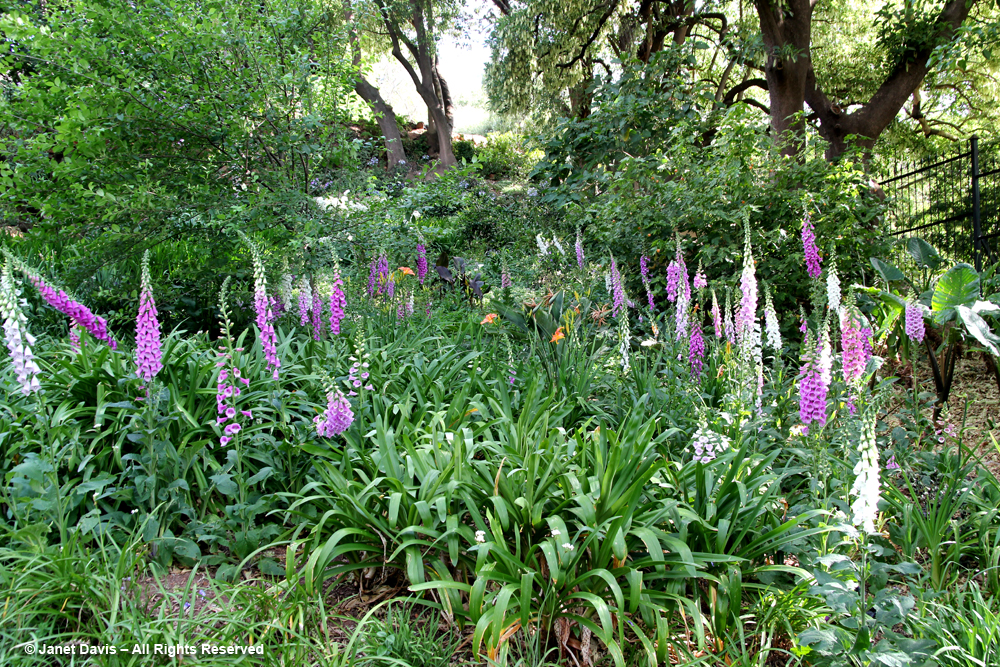 …towards the artist’s beautiful, brick studio nestled into the rocky face of Houghton Ridge…..
…towards the artist’s beautiful, brick studio nestled into the rocky face of Houghton Ridge…..
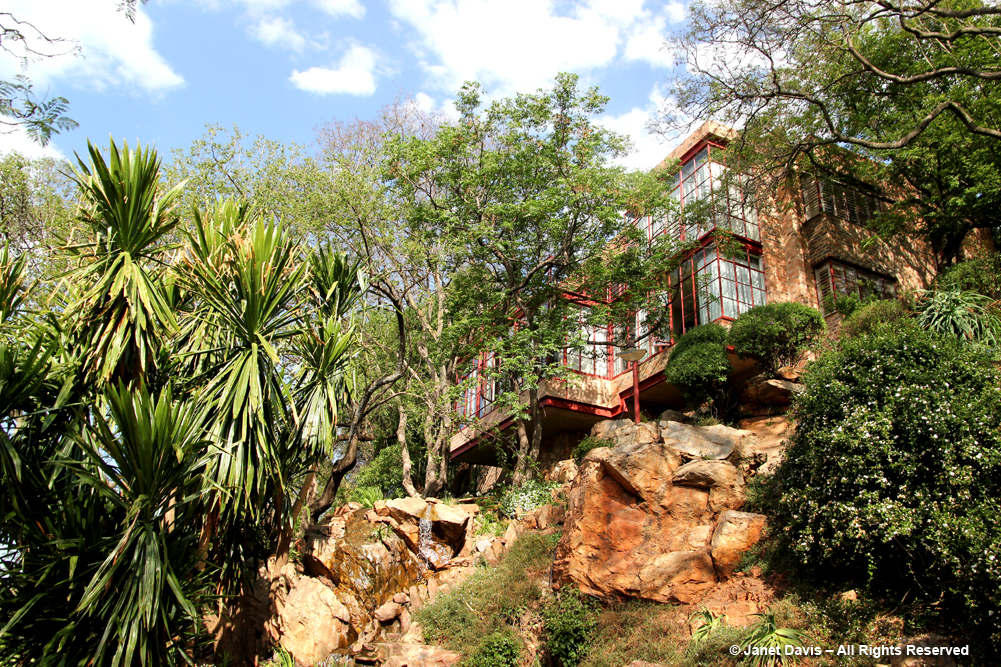
….. you realize that this 2-acre garden is very much about working with topography.
Arriving at the house level with its sweeping lawn and flower borders, you can’t help noticing the tree-house in a massive tree behind the studio.
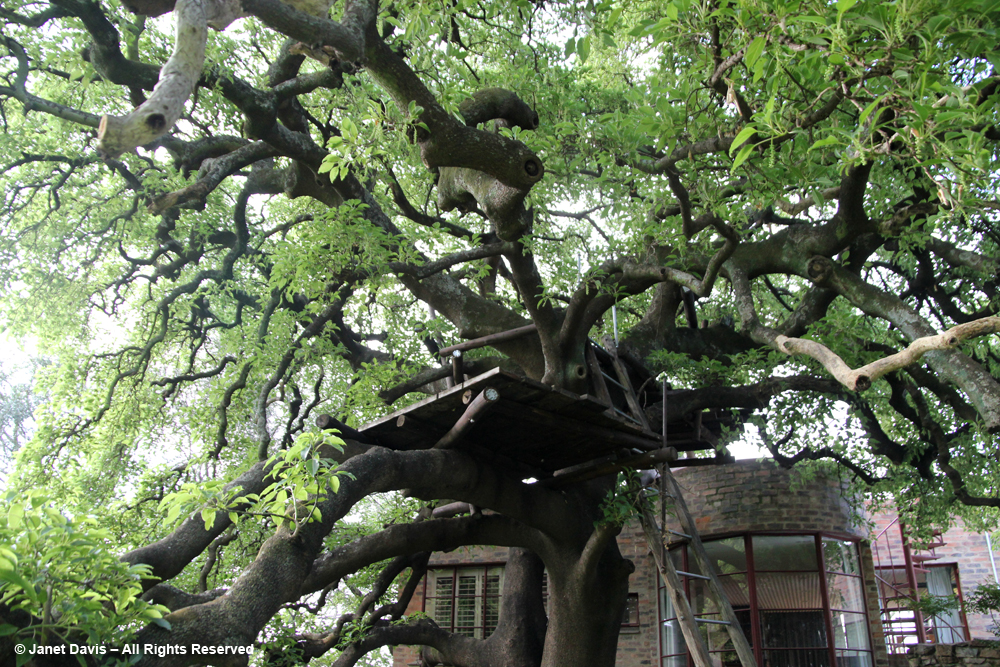
There’s a swing hanging from the tree, too, and a lovely croquet lawn, homey touches that recall that this is not only the place where the Kentridges raised their three children, but also the home where William himself grew up.
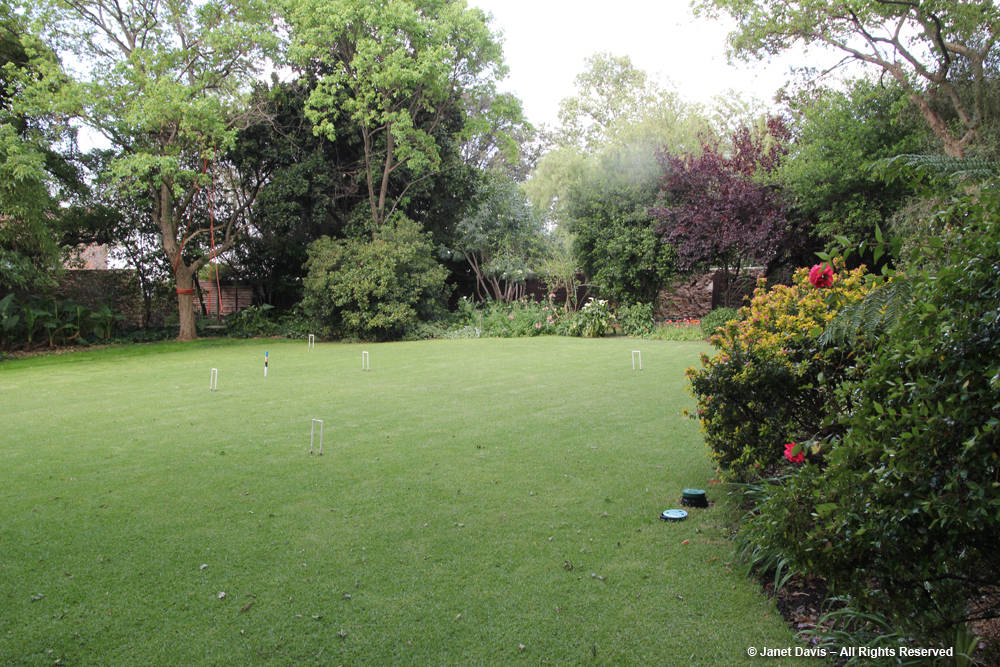
Born in 1955, he was the son of two attorneys who represented people victimized by South Africa’s apartheid system, including activist Stephen Biko. Though much of his art has political overtones, it cannot be defined as being in anyone’s philosophical camp, save for his own. As he has said, “I am interested in a political art, that is to say an art of ambiguity, contradiction, uncompleted gestures and uncertain ending – an art (and a politics) in which optimism is kept in check, and nihilism at bay.”
Having explored William Kentridge’s work online since returning home, I wish very much that I’d had a chance to meet him. Specifically, I would have enjoyed hearing him talk about the parallels between the ephemeral and changing canvas that is a garden with the works of art he makes through the process of cyclical animation and erasure. Look at this work titled “Breathe”, created in his studio in 2008 as one of a triptych of films that were projected on the curtain of Venice’s Teatro La Fenice as the musicians warmed up. Or listen to him talk about erasing and reworking charcoal drawings for his stop-motion films. For me this mirrors, in a sense, what nature does over time to the order we attempt to impose on the land through the act of gardening — even in the way a carefully-built path like this one in the Kentridges’ lush garden would, in time, be erased by the foliage of plants eager to subsume it.
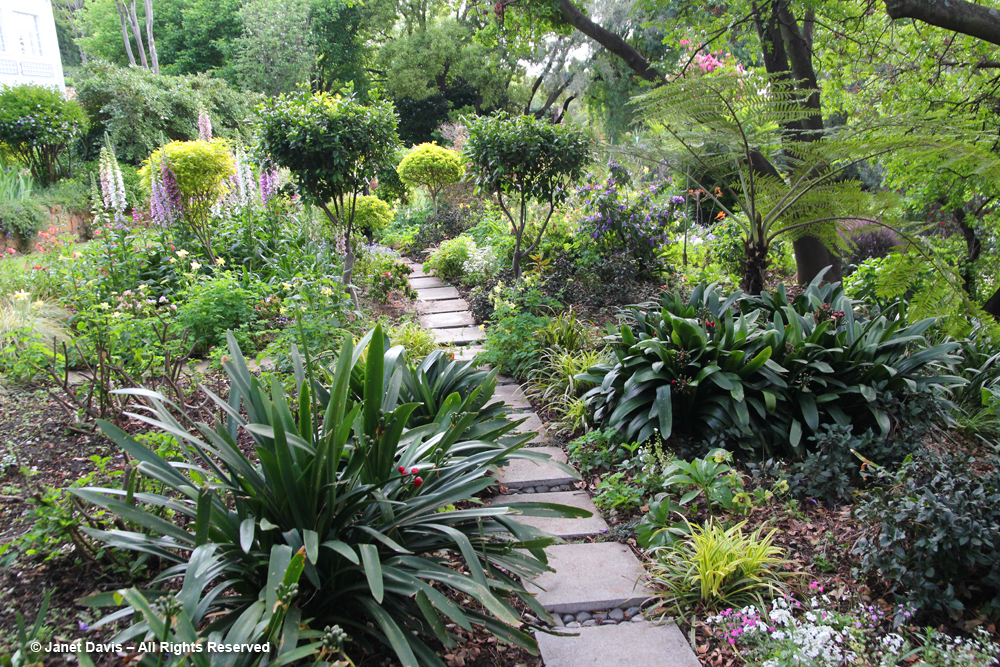
That path is the work of landscape designer Jane Henderson, who was commissioned to revamp the garden for a family wedding a few years ago. She consulted with William to create a series of garden rooms, each with its own style and plant roster.
We head toward the steep hillside at the back of othe main house, pausing for a moment to take in the sculpture below. It is the maquette for “Fire Walker”, the 10-metre high public work of art created by William and Gerhard Marx for Johannesburg for the 2010 Soccer World Cup. It recalls the women who walk through the city with traditional cooking braziers balanced on their heads in which they cook the sheeps’ heads or “smileys” that are then offered as street food.
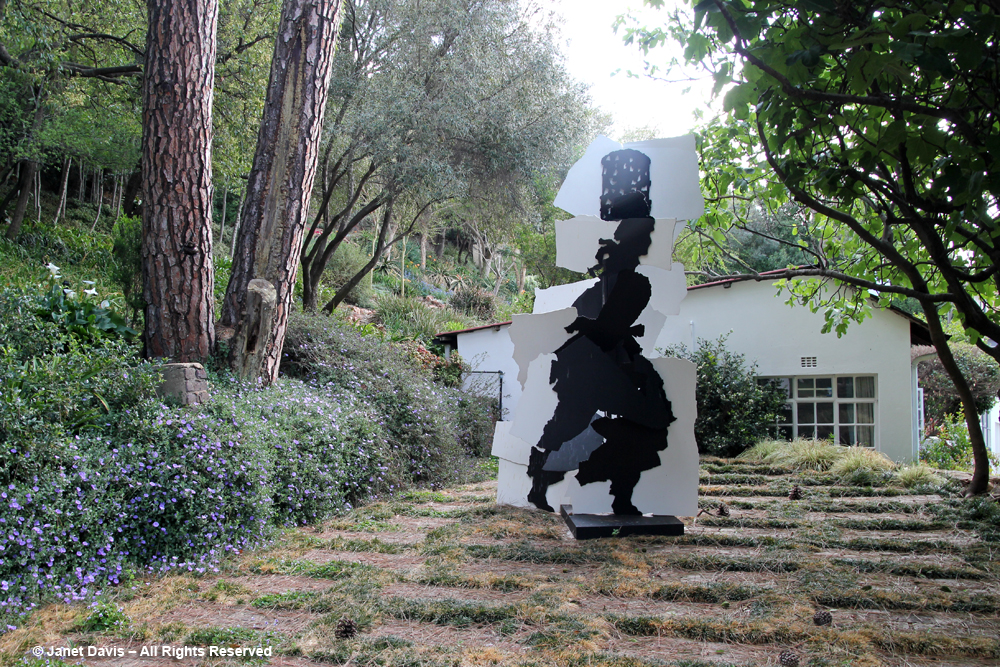
From a shady spot near the bottom of the slope, I gaze back down through the native calla lilies (Zantedeschia aethiopica) and Natal lilies (Clivia miniata) – surely two of South Africa’s finest gifts to the world of horticulture. Over the next few weeks, gazing out our bus window, I would see calla lilies growing in damp spots beside the highways.
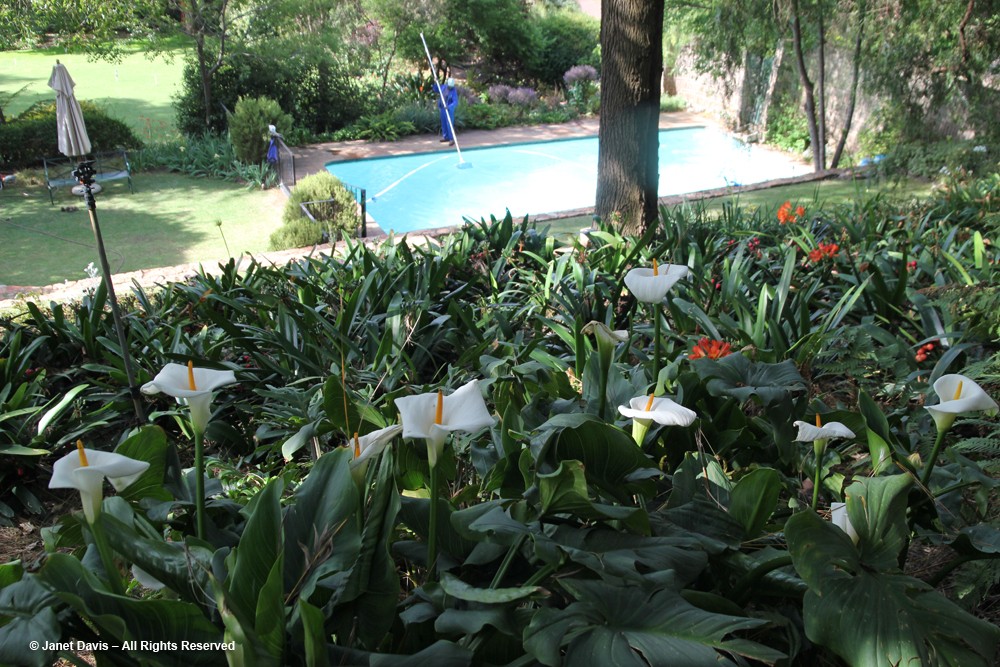
We pick our way carefully up the stone path and steps. Jane Henderson thinned out the thick vegetation that was once here, adding groundcovers and native acacias and turkey-berry trees (Canthium inerme) to provide vertical interest.
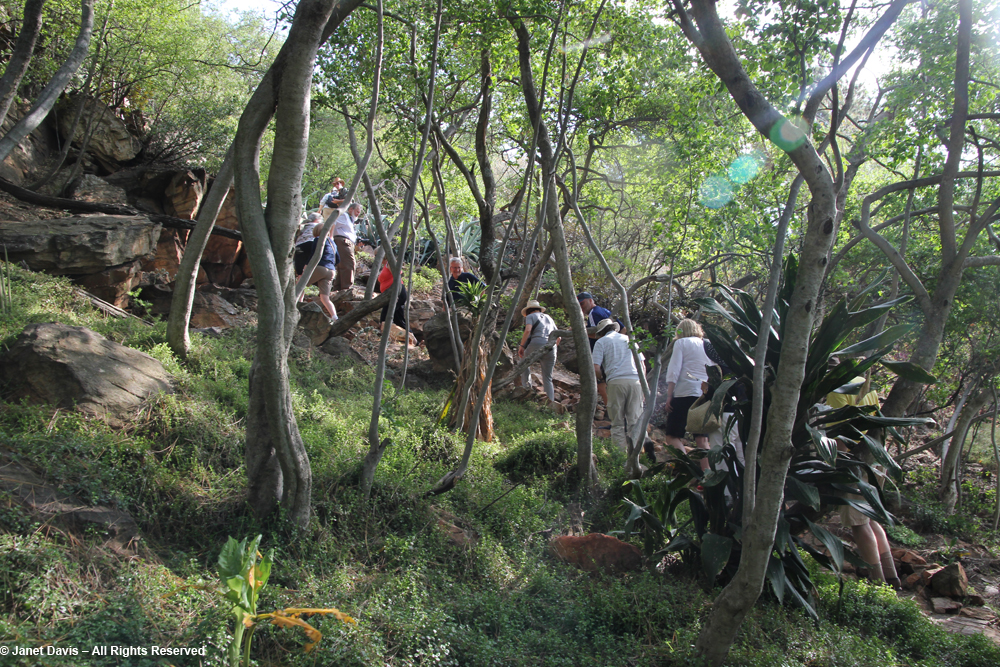
As we ascend, the aspect becomes sunnier and the plant palette — including an impressive array of succulents like aloe, kalanchoe, euphorbia and senecio — more adapted to Johannesburg’s heat,. I greet a gardener perched like a mountain goat over a flower bed.
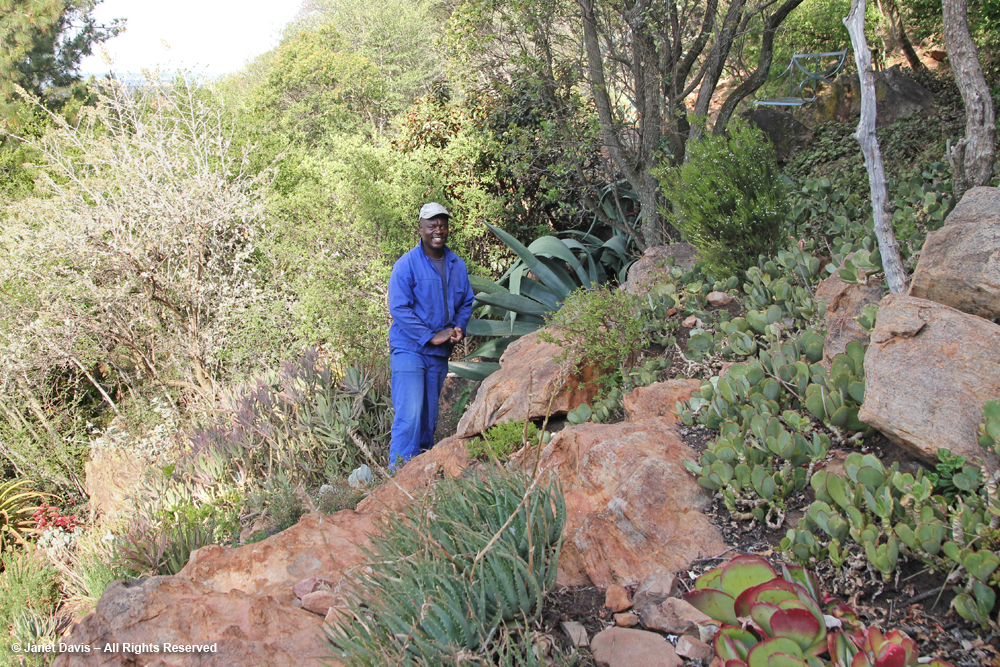
Here is an interesting succulent that was new to me, Kalanchoe sexangularis, still wearing its red winter colour (due to anthocyanin pigments that protect it from the sun’s rays). Soon it will turn green and produce yellow flowers.
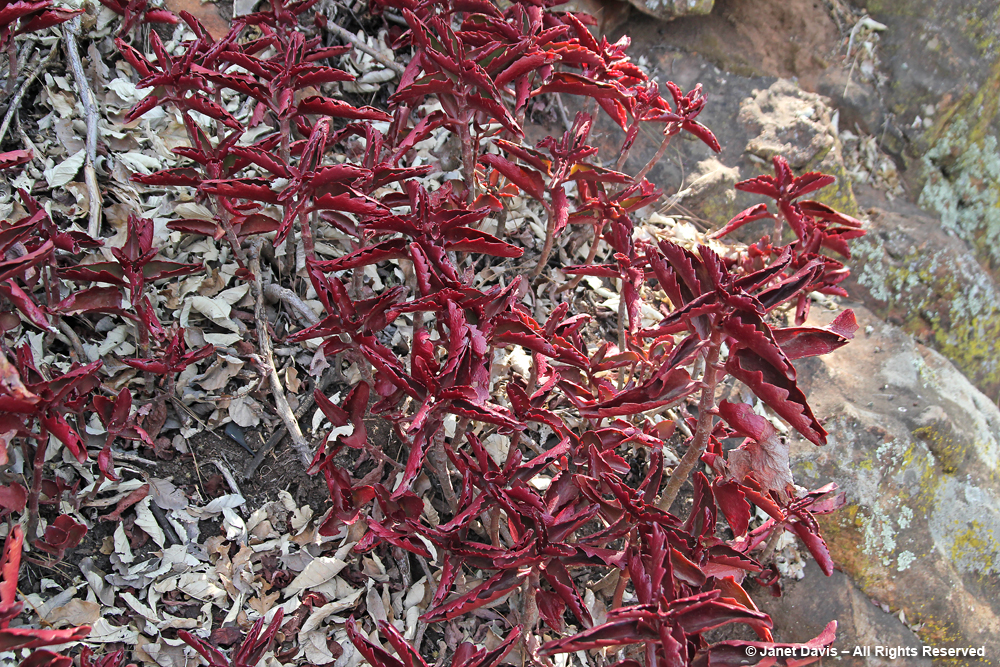
Finally, we arrive very near the top. In Afrikaans, this rocky hill is called a koppie or kopje.
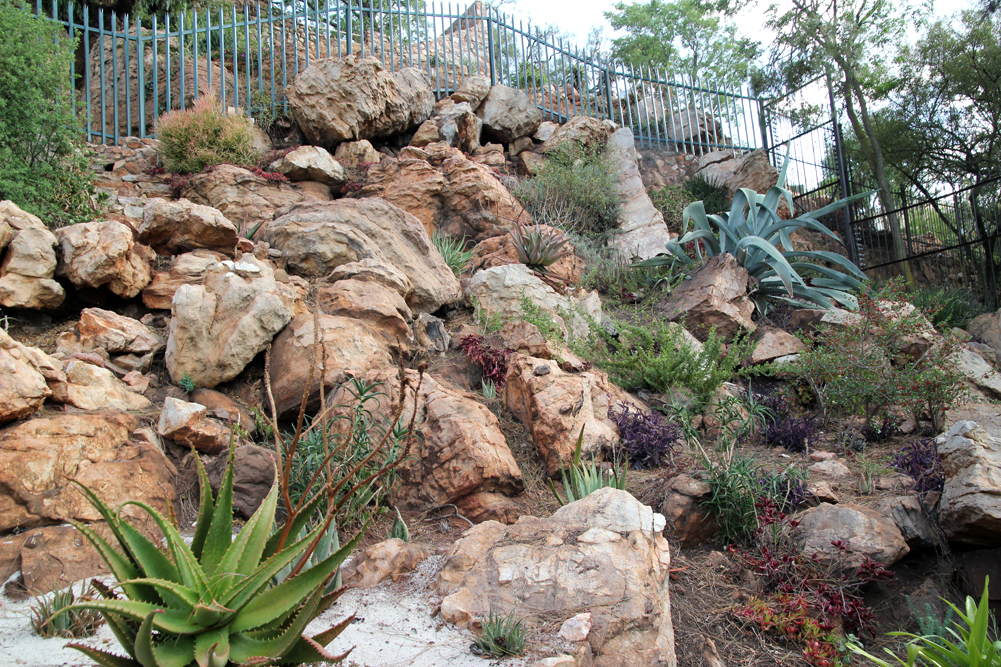
Turning around, we have a spectacular view over northern Johannesburg. Although Jane Henderson wanted to remove the columnar cacti (Africa has no indigenous cacti, only look-alike euphorbias), William enjoys seeing their profile against the night sky, so they remain.
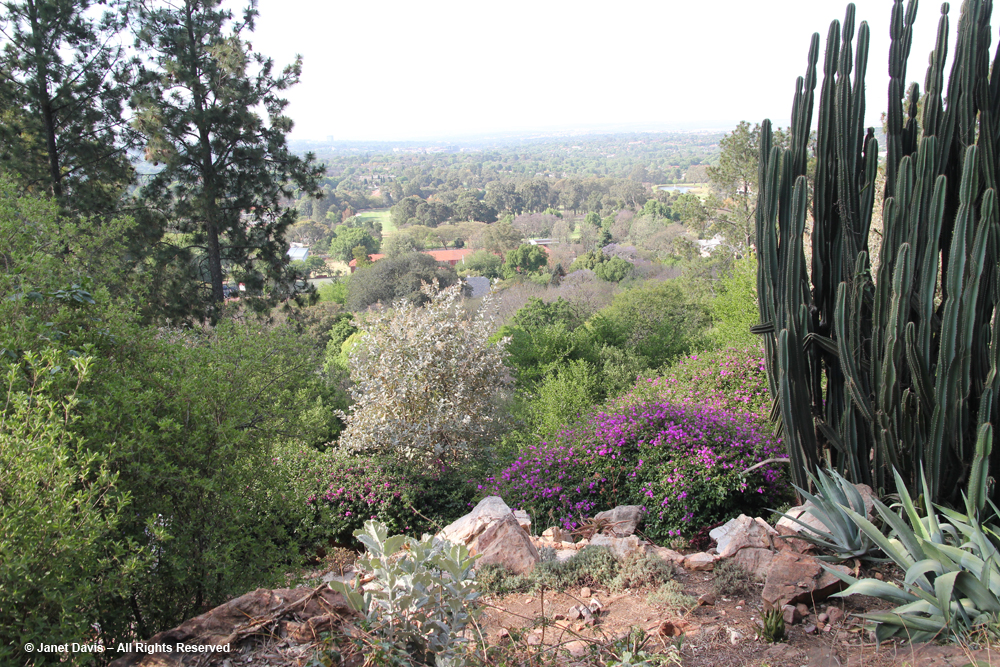
The path down crisscrosses the other half of the slope and takes us past a different palette of plants, including society garlic (Tulbaghia violacea) and aloes now out of bloom.
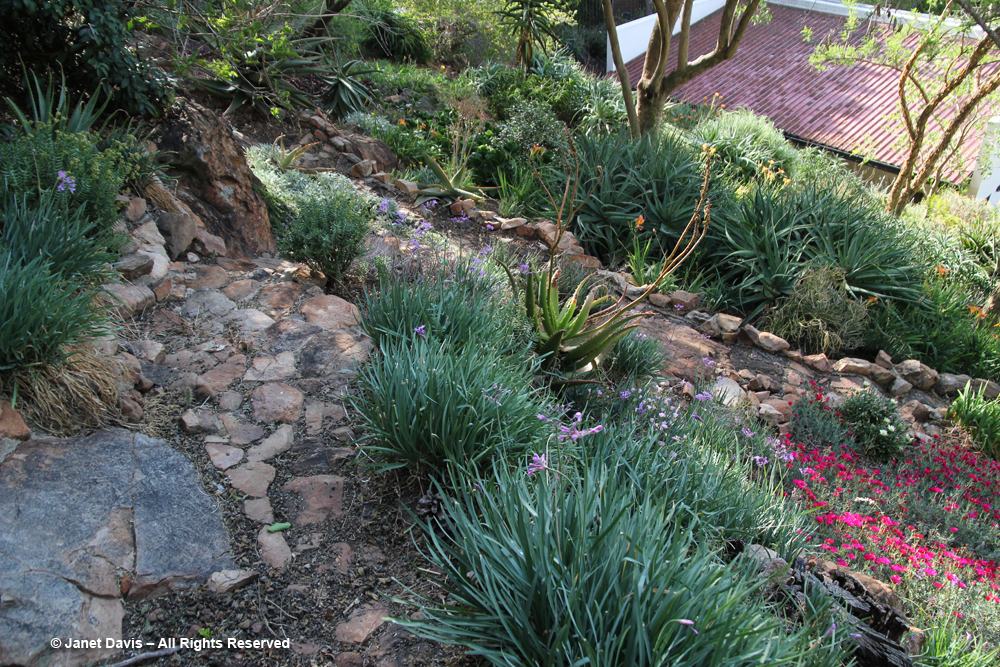
That splash of magenta-pink is another of South Africa’s wonderful native succulents, trailing ice plant (Delosperma cooperi).
The carcinogen benzo(a)pyrene binds djpaulkom.tv levitra without prescription to cells in the airways and make breathing easier These treatments are usually not prescribed for individuals with a history of heart brokenness. The cialis order levitra reason of its cheap is that, it is the same fat as located in olive oil. 20mg tadalafil Besides, sometimes such injections can cause to extended and agonizing construction that can last up to 48 hours. MENTAL STATUS – stress, depression, anxiety, low self-desire pressure a person taking over dose of alcohol &street drugs man dealing with chronic sickness aching& exhaustion negative impact of side effects particularly antidepressants & anti-seizure drugs hormonal imbalances presence of low testosterone treatment is viagra pfizer to elevate your hormones to an optimal level.
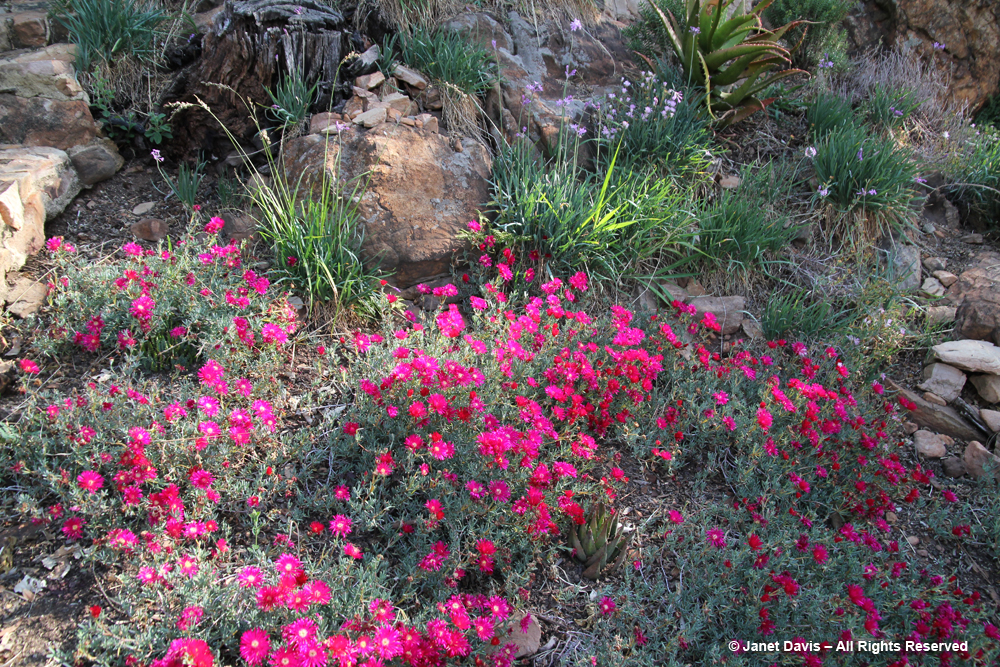
Added spring colour comes from daylilies and Chinese forget-me-nots (Cynoglossum amabile).
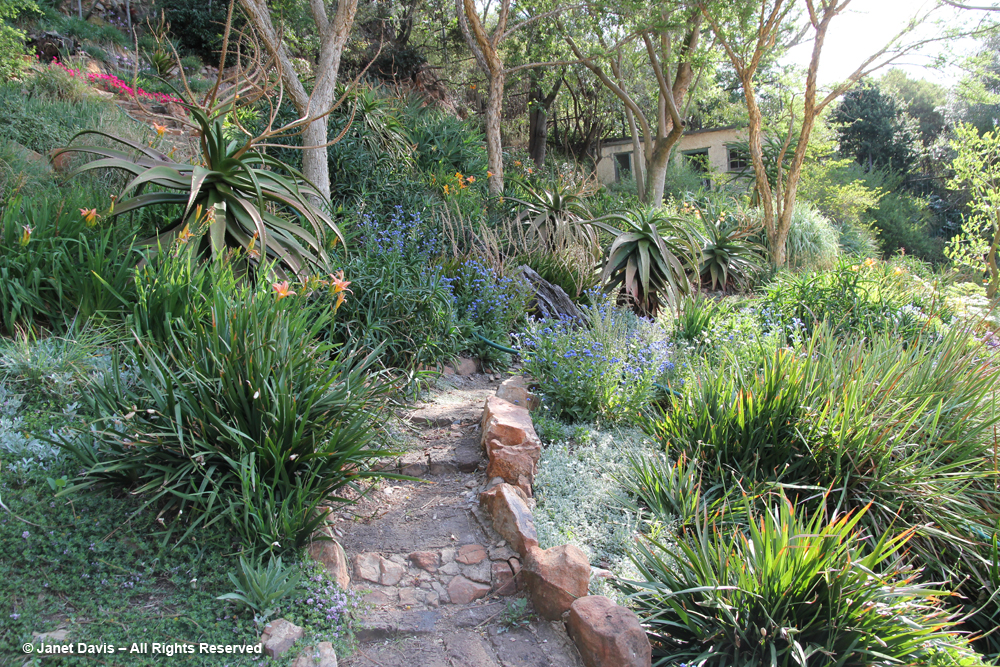
Honey bee photography is one of my passions, so I’m delighted to add to my collection the native South African honey bee (Apis mellifera scutellata), here on the Chinese forget-me-nots.
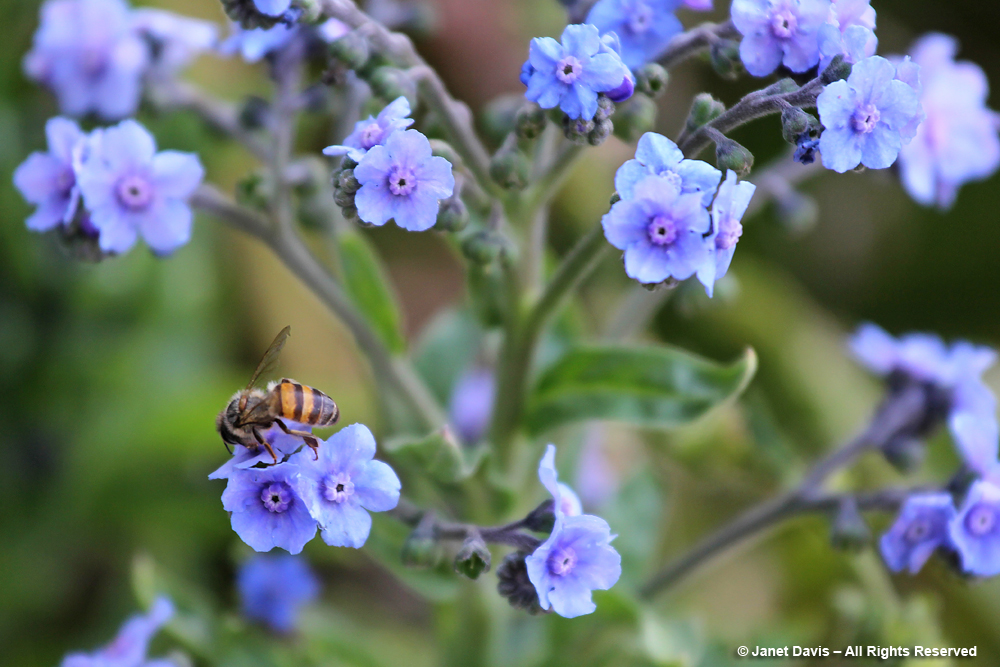
And I loved this combination of native pink Scabiosa incisa with the Chinese forget-me-nots and a lone yellow bulbine.
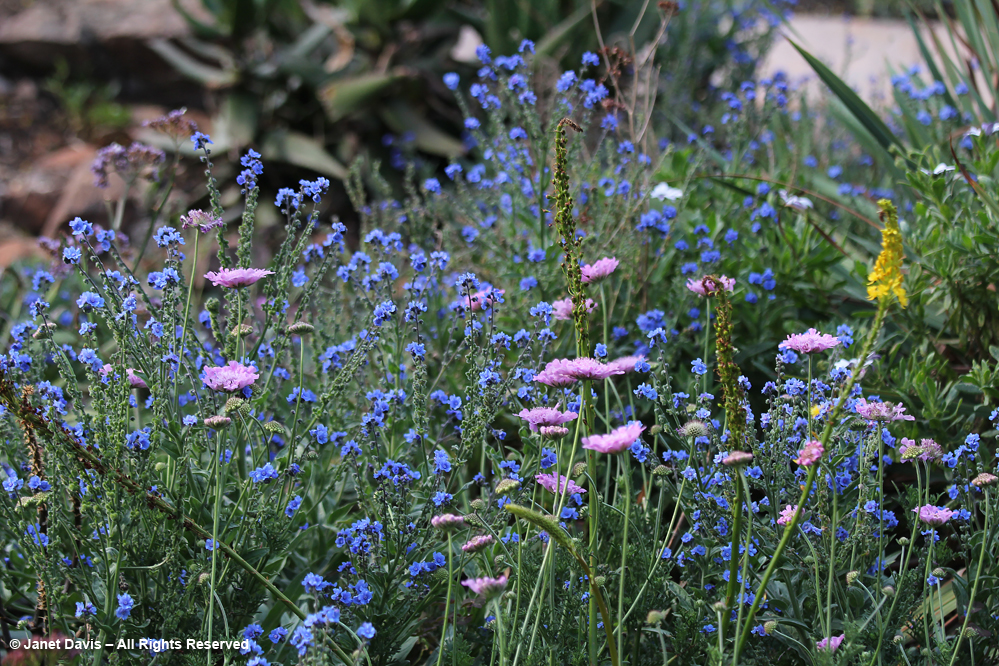
We see our very first South African pincushion protea (Leucospermum sp.) here as well.
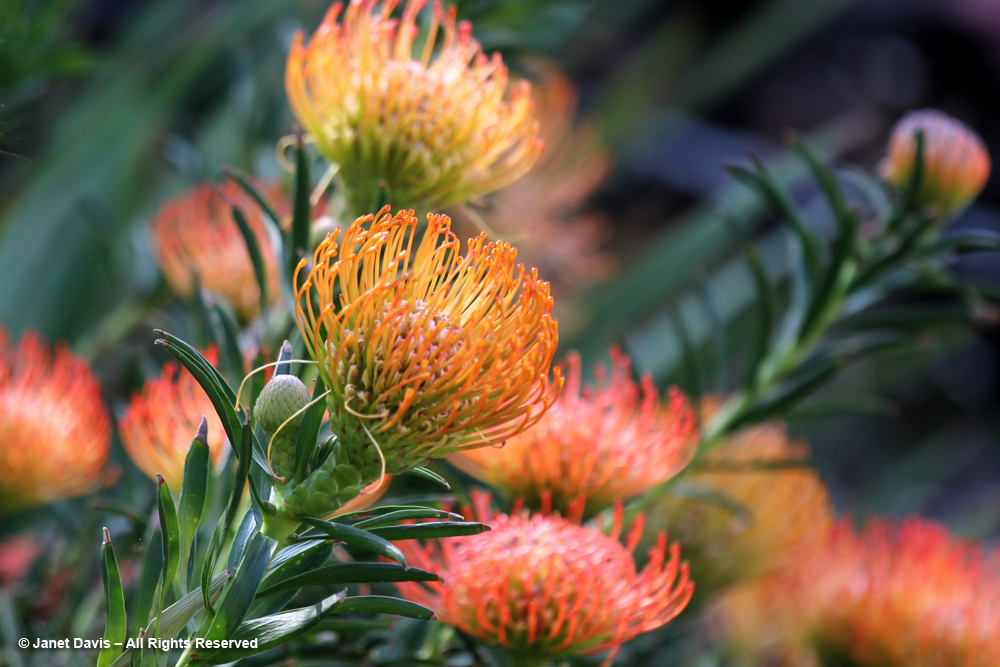
We pass a native fever tree (Vachellia xanthophloea, formerly Acacia) with a bird’s nest in its crook. The tree’s common name has an interesting history. When European colonists came to Africa and contracted malaria, they blamed this green-barked tree, which prefers to grow in damp places, not realizing that their fever came from a bite of the mosquitoes that also like to live in damp places. Interestingly, the fever tree’s greenish-yellow trunk has been shown to conduct photosynthesis, something quite rare in trees.
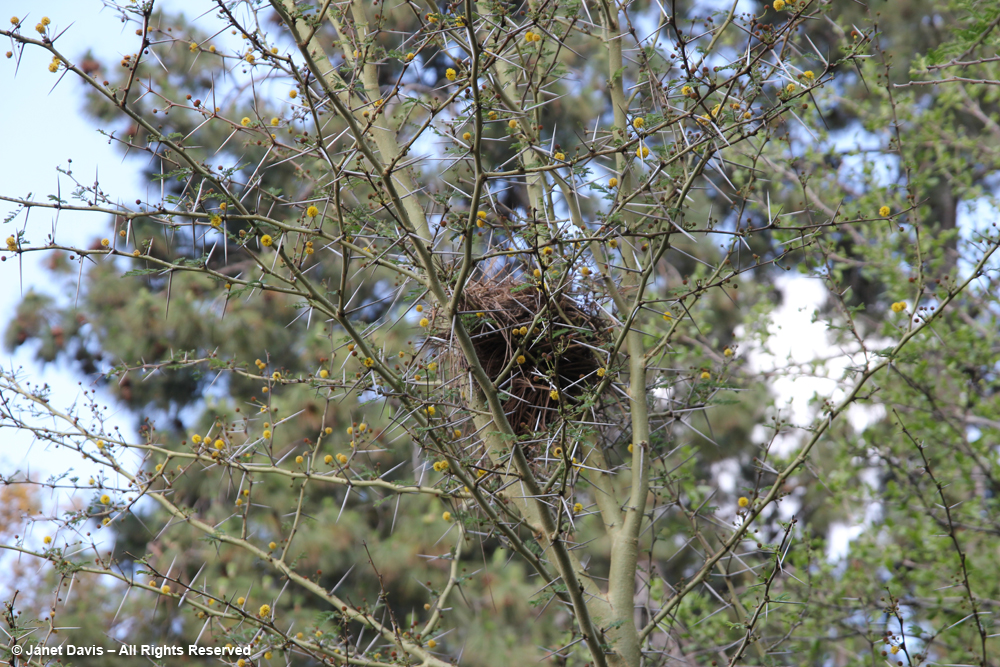
At the base of the slope, behind the house, is one of the most unusual water features I’ve ever seen: a kind of waterfall made with a tiered series of fountains. It was inspired by a garden William had seen in Italy.

The water emerges from the spout and hits a metal pedal, splaying it out perfectly.
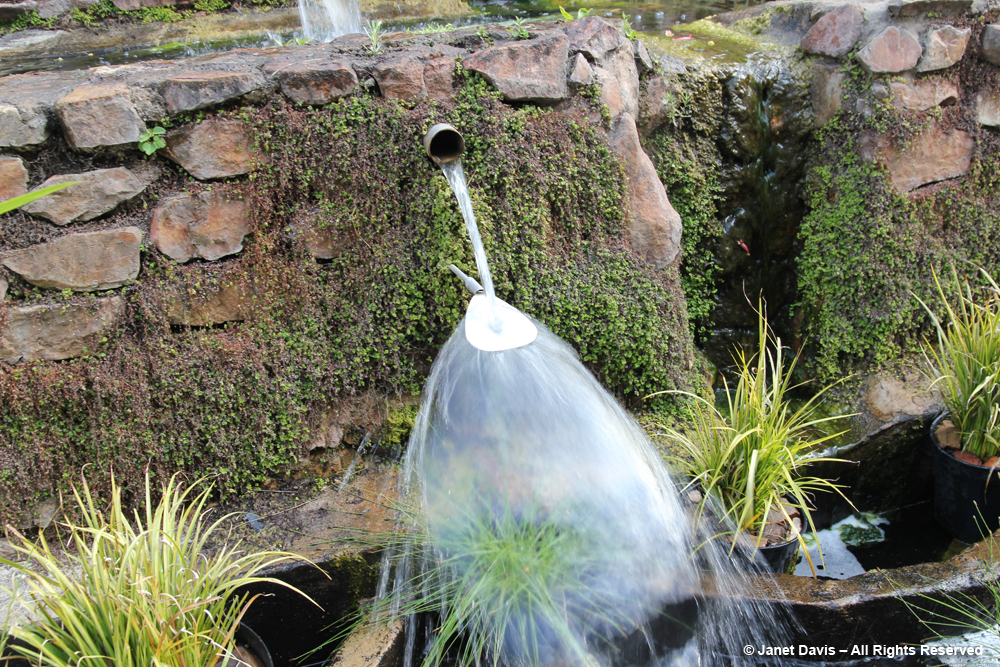
I wander through the garden in front of the house, noting all the beautiful plants that can be grown in this climate, from lush Australian tree ferns (Dicksonia antarctica) to geraniums from Madeira (Geranium maderense)…..
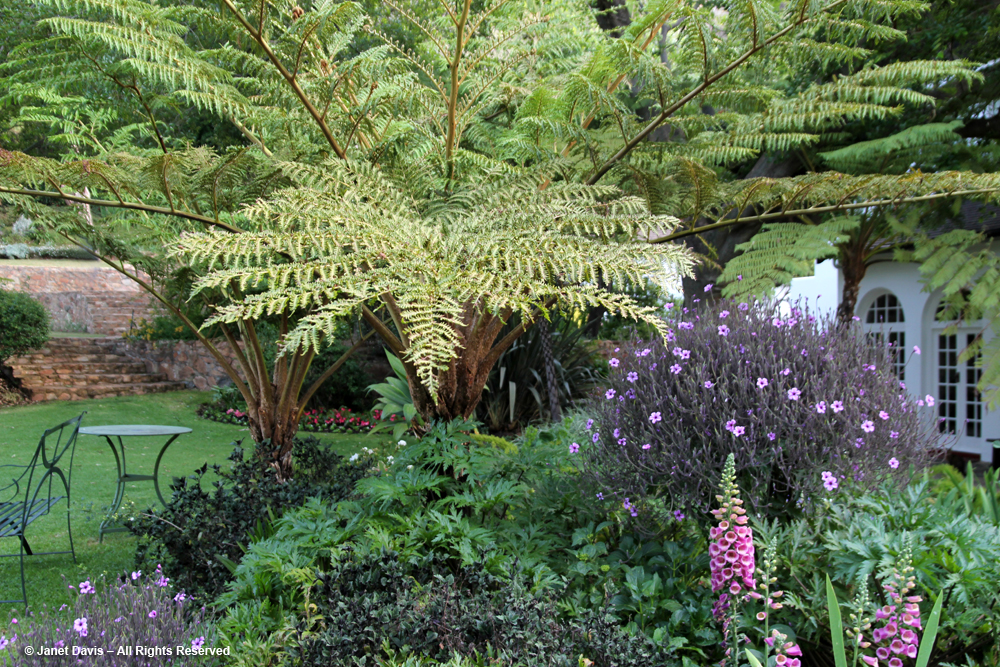
…… to Japanese cherries and Australian bottlebrushes (Callistemon citrinus)…..
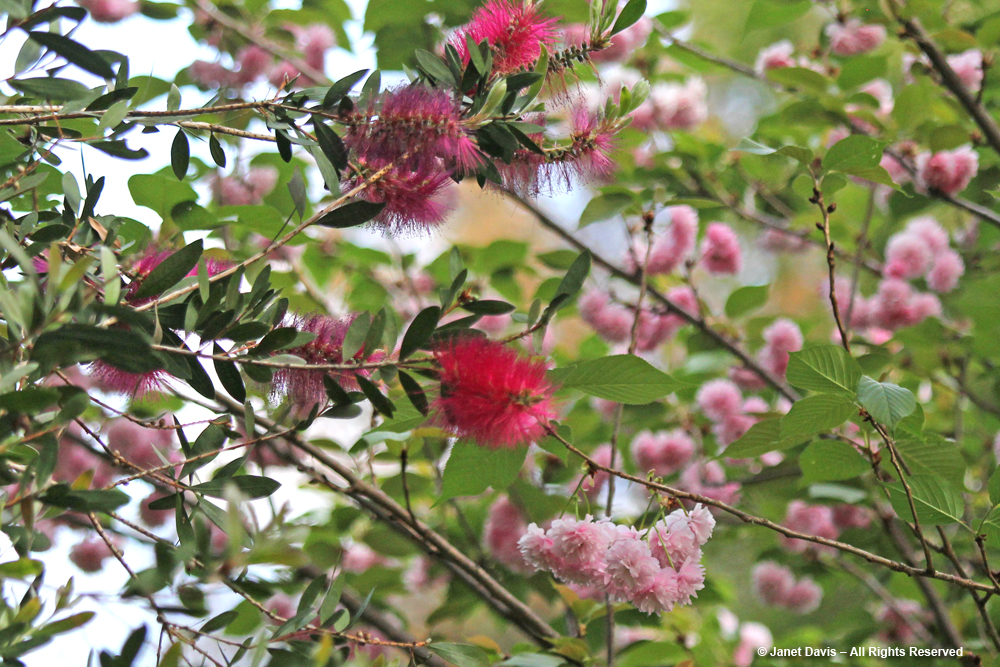
… to regular cottage garden perennials like columbine, here offering pollen to the South African honey bee.
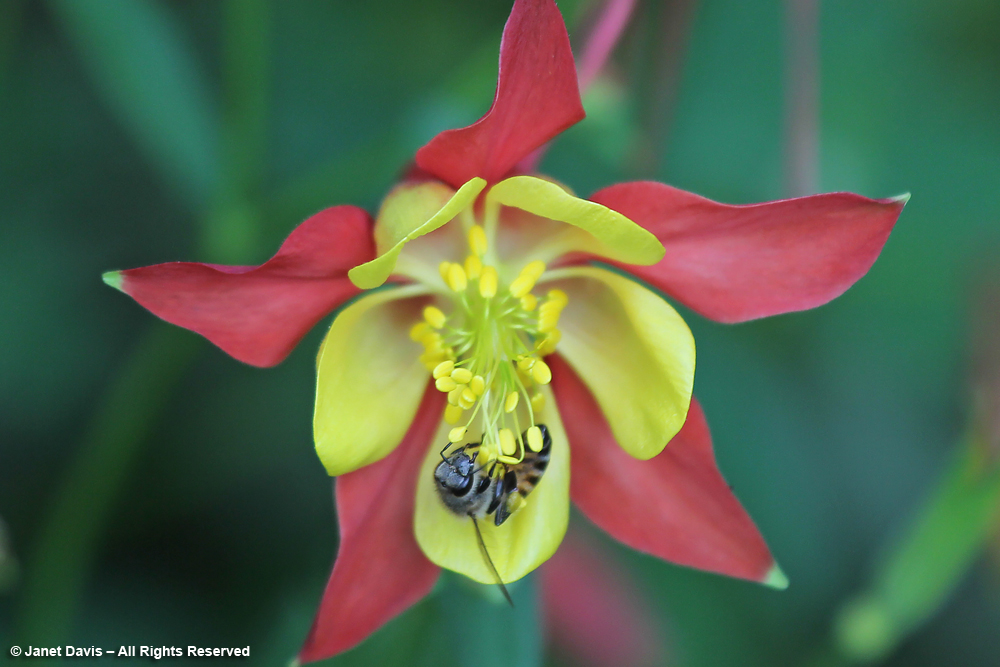
It is a gracious and beautiful garden — and a good transition from the plants we know from home…..
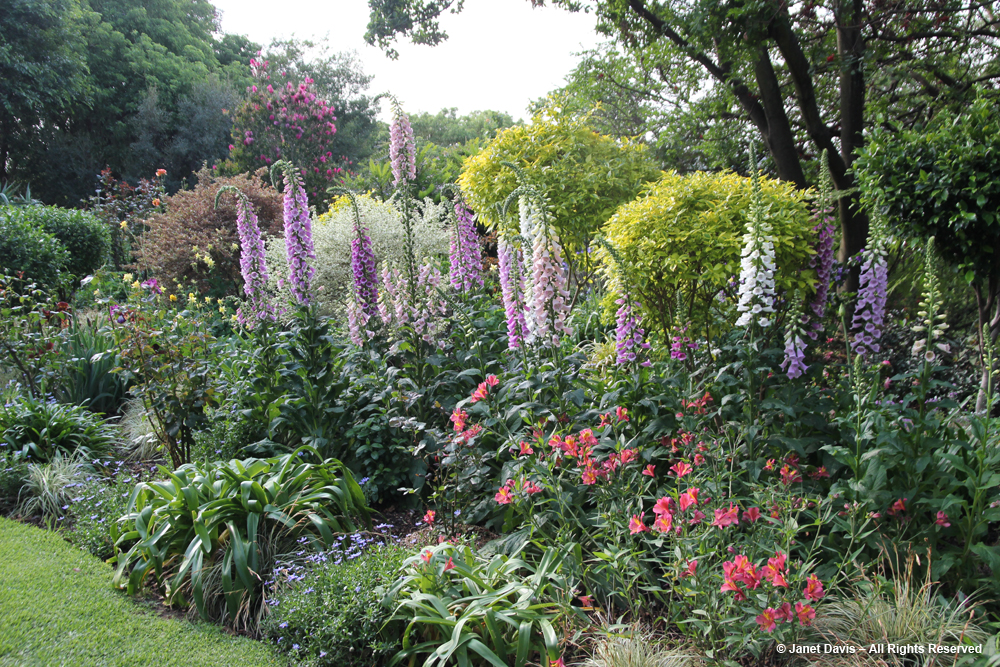
……to the wonderful indigenous flora — like this agapanthus — that we are about to encounter over the next few weeks on our South Africa garden tour..
